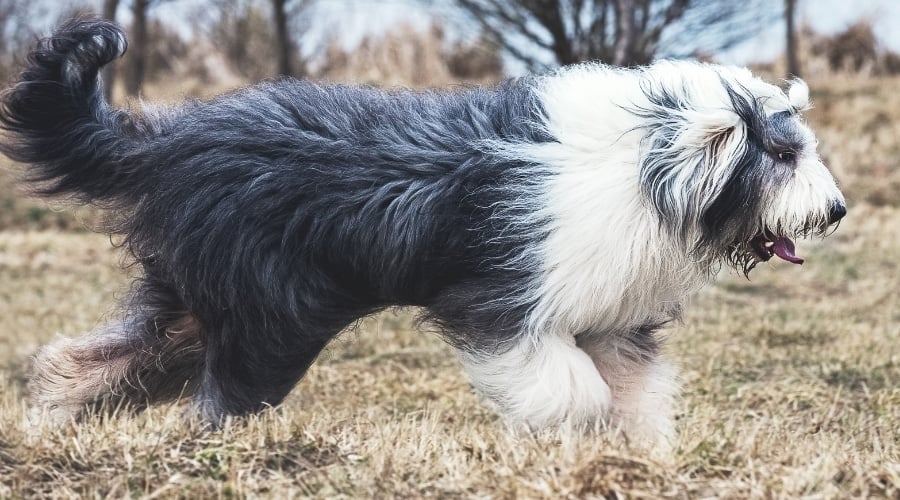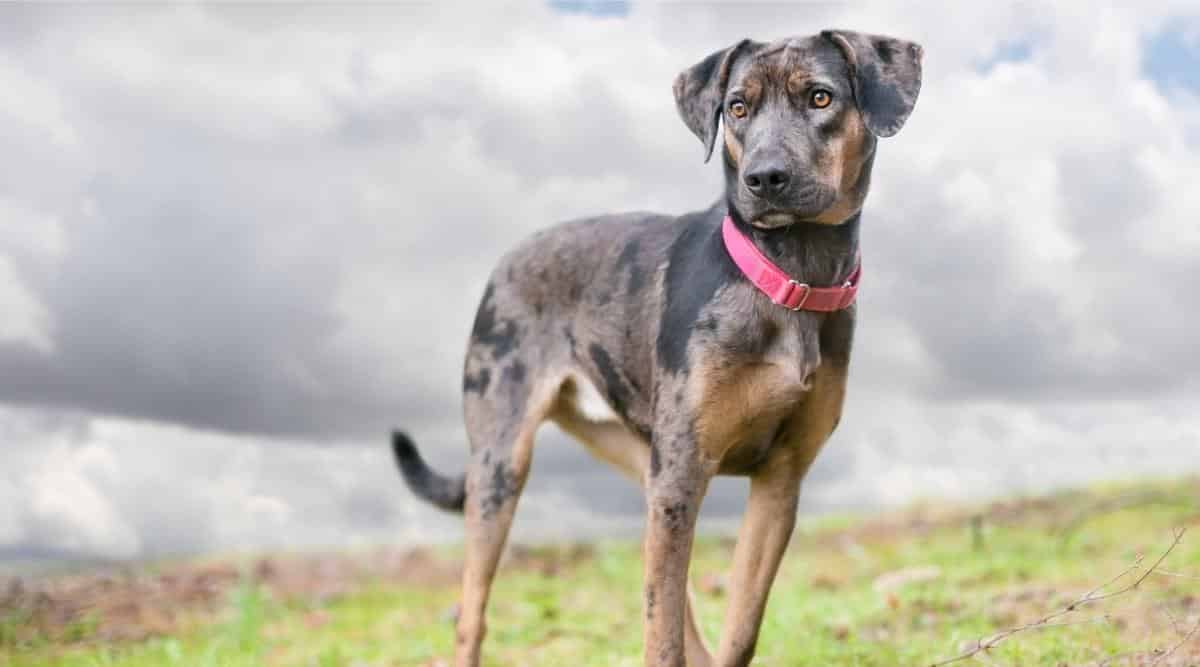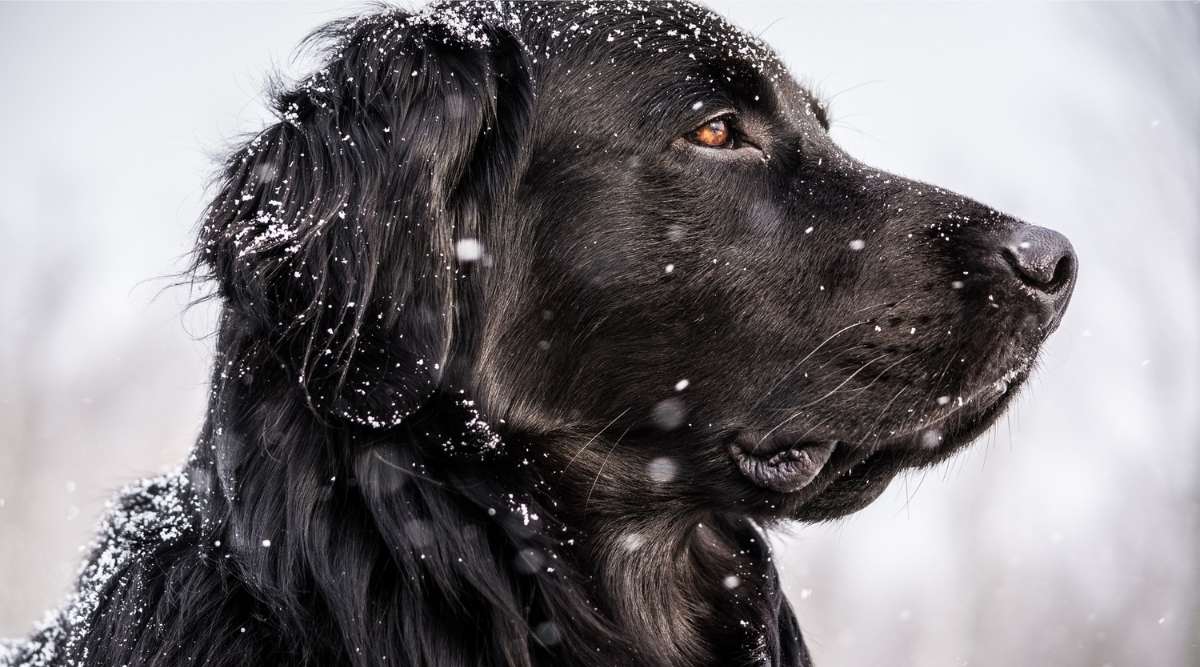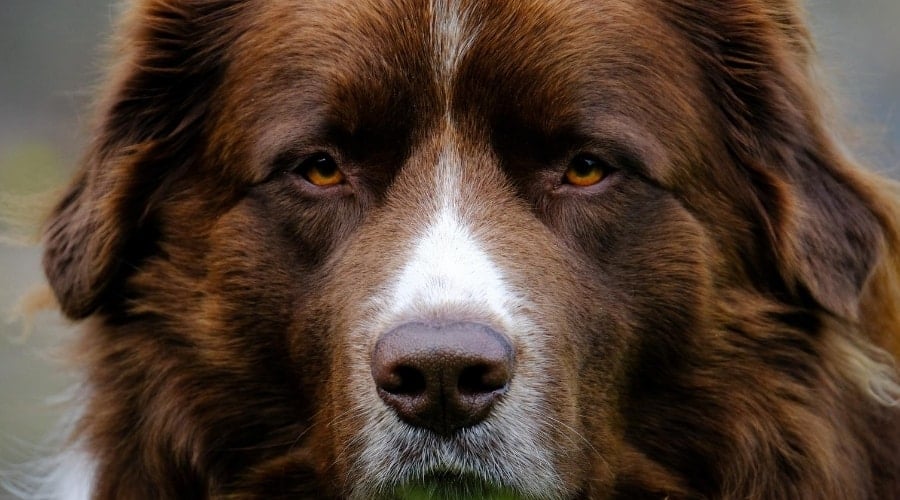51 Labrador Retriever Mixes That Look Like Someone Hit ‘Randomize Dog’
When you purchase through links on our site, we may earn a commission. Here’s how it works.
These 51 Labrador Retriever mixes are real, and some of them broke our brains. They are what happens when you let chaos and cuddles co-parent.
Table of Contents
Ever seen a Lab crossed with a Chihuahua? You’re about to, and it’s somehow both adorable and mildly confusing. I rounded up 51 real-deal Lab combos, from the majestic Goldador to the “wait, that’s legal?” Labrahuahua.
Some look like designer dogs. Others look like someone mashed two breeds in a Photoshop speed run. All of them? 100% real, 100% worth scrolling.
Meet The Labrador
Before we dive into the wild world of Lab combos, let’s talk about the Labrador Retriever, the breed that started it all. Labs are basically the Golden Retrievers of chaos: loyal, lovable, always down for a snack or a mud puddle.
They typically weigh 55 to 80 pounds, stand about 21.5 to 24.5 inches tall, and usually come in black, chocolate, or yellow coats; however, they sometimes sport rarer fox-red and silver jackets.
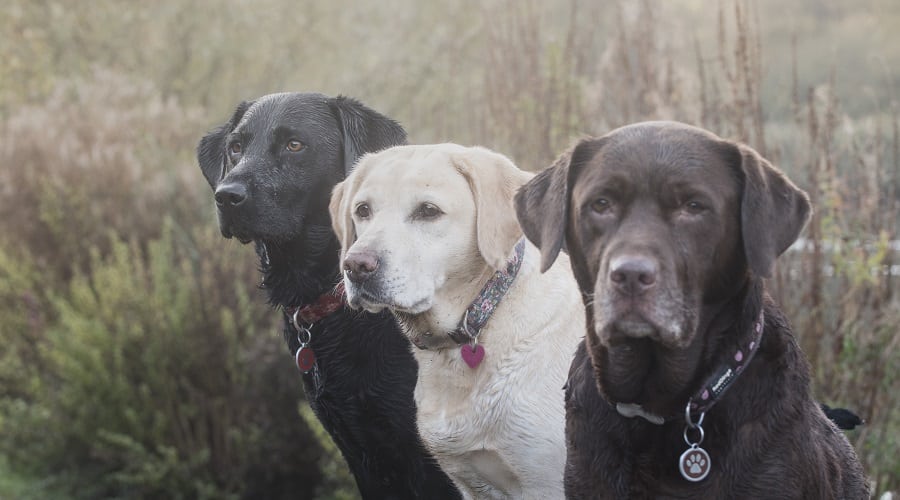
Labs shed like it’s their full-time job. Their double coat is short but thick, and while they don’t need fancy trims, they do require regular brushing, especially during shedding season.
Add in a high energy level, food obsession, and a knack for mischief, and you’ve got the base DNA for 51 delightful experiments. Now, imagine taking all that energy, friendliness, and fluff and remixing it with a variety of other breeds. That’s what this list is. It’s the Labrador, but unpredictable.
English vs. American Labs
Not all Labradors are built the same. There are two main lines: the English (Bench) Lab and the American (Field) Lab. English Labs are stockier, slower to mature, and bred more for show and companionship. American Labs? Leaner, more athletic, and often laser-focused, built for hunting and work.
Why does this matter? Because whichever one is in your Lab mix will shape everything from energy level to trainability. So when you’re looking at a Lab cross, ask the breeder which type of Lab was used. It’s like knowing the engine under the hood before buying the car.
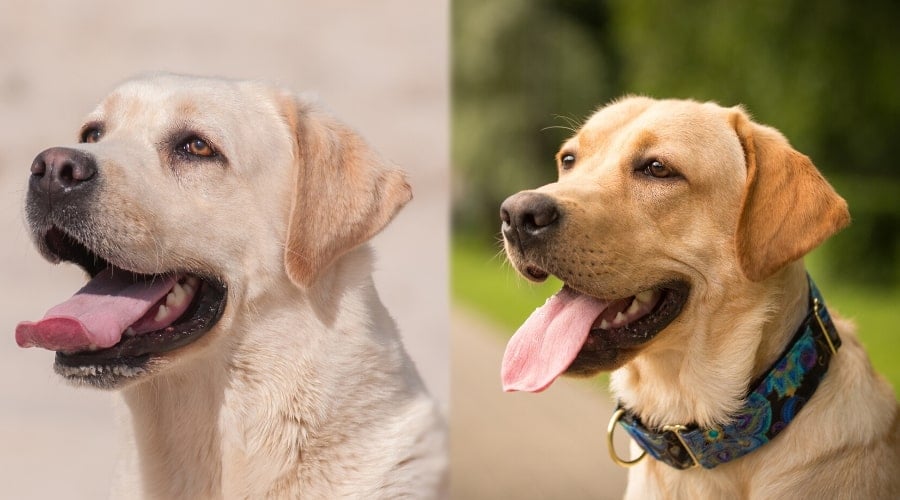
8 High-Energy & Working Labrador Mixes
These Labrador Retriever combos don’t do “lazy.” They’re built for motion, motivation, and absolutely demolishing your daily step goals. If you’re dreaming of a cuddle buddy who lounges all day, look elsewhere. These dogs are wired for work, play, and perpetual motion.
Whether it’s herding, hiking, sniffing out squirrels, or just chasing their own tail at 5 a.m., these mixes are best suited for active homes and people who understand that zoomies aren’t just a phase, they’re a lifestyle.
1. Aussiedor (Australian Shepherd + Lab)
Like living with a genius toddler who just discovered caffeine.
The Aussiedor is the overachiever of Lab mixes: part herding machine, part people-pleaser, and 100% go-go-go. This mix blends the laser focus of the Australian Shepherd with the sunny, eager-to-please vibe of the Labrador, creating a dog that’s wickedly smart and relentlessly energetic.
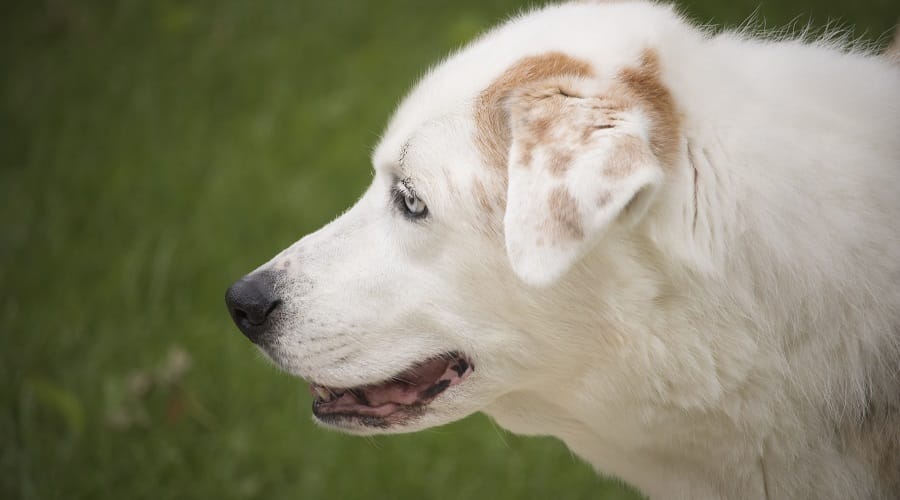
These are medium-sized, extremely active pups that need lots of exercise to keep them happy. Additionally, you’ll need a home with a large backyard where your dog can run and play.
Aussiedors thrive on structure, puzzles, and a sense of purpose. If you don’t give them a job, they’ll find one, like herding your kids or reorganizing your throw pillows.
They’re affectionate, loyal, and responsive, but they’re not low-maintenance. Expect lots of mental stimulation, long walks, and a dog that watches your every move like it’s studying for a test.
Both parent breeds are highly trainable and energetic, and the Aussiedor is, therefore, best suited to an active family that spends a lot of time outdoors. The Aussiedor has a life expectancy of up to 14 years.
2. Doberdor (Doberman + Lab)
Built like a bodyguard, plays like a goof.
The Doberdor blends the sleek, intense energy of a Doberman with the playful friendliness of a Labrador, and the result is surprisingly balanced. This mix is strong, fast, and fiercely loyal, but not as aloof or serious as a pure Doberman.
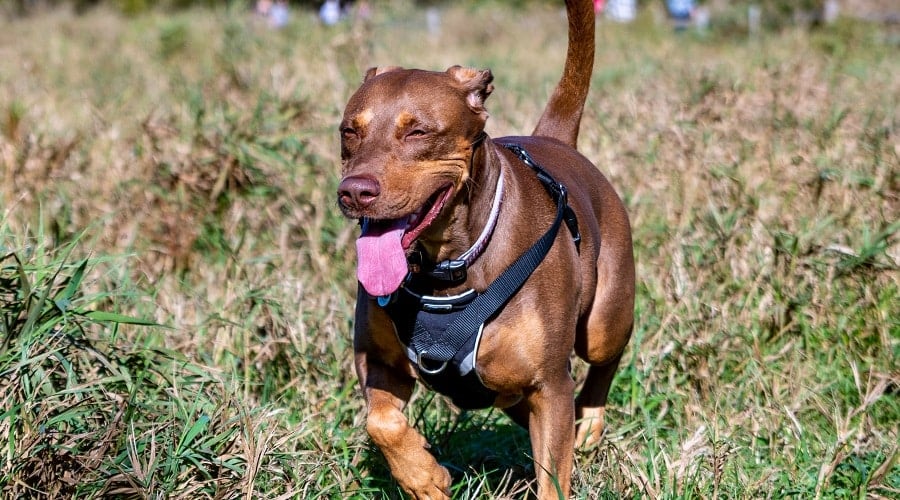
Doberdors are active and protective without being overly aggressive, making them an excellent choice for experienced owners who want a family-friendly dog with a bit of edge. The Doberdor is a pretty healthy breed with a lifespan of up to 12 years.
They need structure, exercise, and clear leadership, or they’ll take the job themselves. Bonus: they’re ridiculously good-looking and often have a striking, glossy coat that turns heads on every walk.
These large, powerful dogs can weigh up to 100 pounds when fully grown. Doberdors, like other Doberman mixes, need lots of exercise to keep them fit and healthy. Again, you’ll need a spacious home with a large backyard or garden to comfortably accommodate one of these dogs.
Generally good with other dogs and children, the Doberdor is a friendly pup that’s easy to train. The breed is also very alert and makes a superb watchdog. Doberdors usually have a short coat that sheds seasonally and requires brushing once or twice a week to keep it clean and tidy.
3. German Sheprador (German Shepherd + Lab)
Your personal trainer, therapist, and shadow, all in one.
The German Sheprador is a high-IQ, high-intensity mix with a serious work ethic and a soft spot for their people. You’re getting the discipline and drive of a German Shepherd layered with the social, food-driven charm of a Labrador.
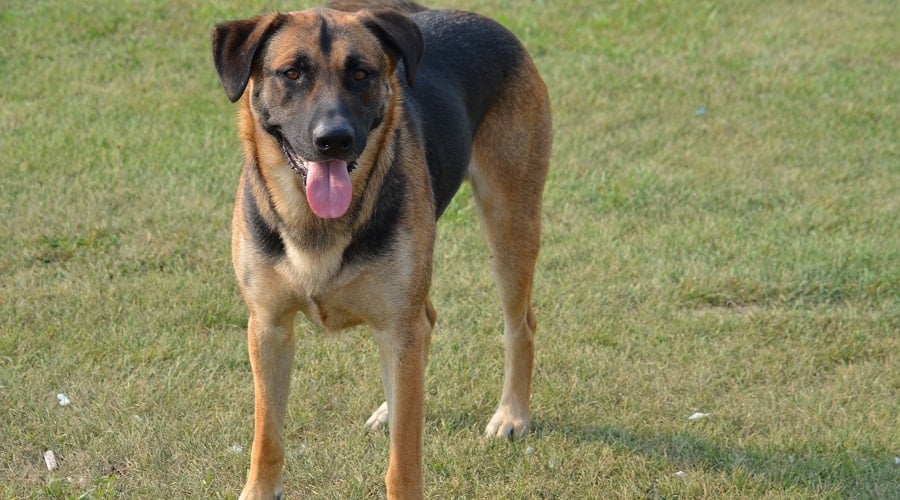
This dog wants a job, whether it’s guarding your house, nailing obedience drills, or herding your friend group at the dog park. Without proper training and structure, the Sheprador can become anxious or overly dominant. But with the right guidance, they’re one of the most loyal, obedient, and protective mixes around.
The two parent breeds are somewhat different in their temperament. The Lab is usually friendly and sociable, whereas the German Shepherd can be more aloof and suspicious of strangers.
Shepradors have a life expectancy of up to 12 years. Both of these pups’ parent breeds are working dogs, and their offspring need plenty of exercise. That said, the breed is very loyal and makes a great family pet and guard dog.
The German Sheprador is a medium to large-sized dog that can weigh up to 90 pounds, standing up to 24 inches tall at the shoulder. The German Sheprador’s coat is usually thick, short, and double-layered. So, you can expect year-round moderate shedding and two extra-heavy shedding periods in the fall and spring.
4. Huskador (Husky + Lab)
Looks majestic. Screams like a banshee. Sheds like a snowstorm.
The Huskador is equal parts beauty and chaos. You’ve got the dense double coat, expressive blue eyes, and independent spirit of a Siberian Husky, fused with the friendliness and energy of a Labrador.

These dogs are runners, built for adventure, not apartment life, and they’ll absolutely take off if given the chance. Training a Huskador requires patience, a sense of humor, and ideally, a fenced yard with Wi-Fi so you can Google how to get them back. Or maybe just a GPS collar…
They’re vocal, stubborn, and ridiculously charming, just be ready to sweep up enough fur to stuff a couch cushion weekly.
The Huskador can grow to weigh up to 80 pounds, standing up to 23.5 inches tall at the shoulder. You can expect your pup to live for up to 14 years.
Like all Husky Mixes, these are friendly, people-loving dogs who are very smart and quick to learn. However, the Siberian Husky is a pack dog and can experience separation anxiety if left alone for extended periods.
5. Labrakita (Akita + Lab)
Silent, stoic, and secretly a marshmallow.
The Labrakita mixes the powerful, reserved nature of the Akita with the affectionate enthusiasm of a Labrador. Like all Akita mixes, this is not a mix for the faint of heart or the first-time dog owner.
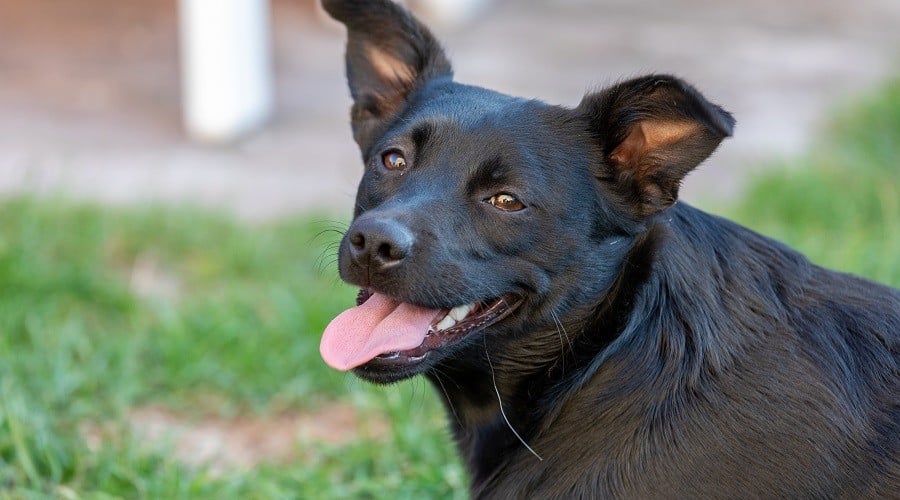
Labrakitas are strong-willed, protective, and loyal to their core, but can also be aloof with strangers and a bit bossy without consistent training. The good news? When bonded, they become deeply devoted companions who’ll quietly follow you room to room like a fuzzy bodyguard.
With early socialization and firm boundaries, the Labrakita blossoms into a gentle, dignified giant with a soft spot for belly rubs.
This is a large dog, standing up to 27 inches tall and weighing up to 110 pounds, so you will need plenty of space to accommodate one of these super-sized pups.
6. Labraheeler (Blue Heeler + Lab)
Herds everything. Including your shoes.
Labraheelers are high-functioning chaos. This mix combines the sharp herding instincts of the Heeler with the eager energy of a Lab, resulting in a dog that’s smart, loyal, and constantly in motion. Great on a ranch. Slight menace in a studio apartment.
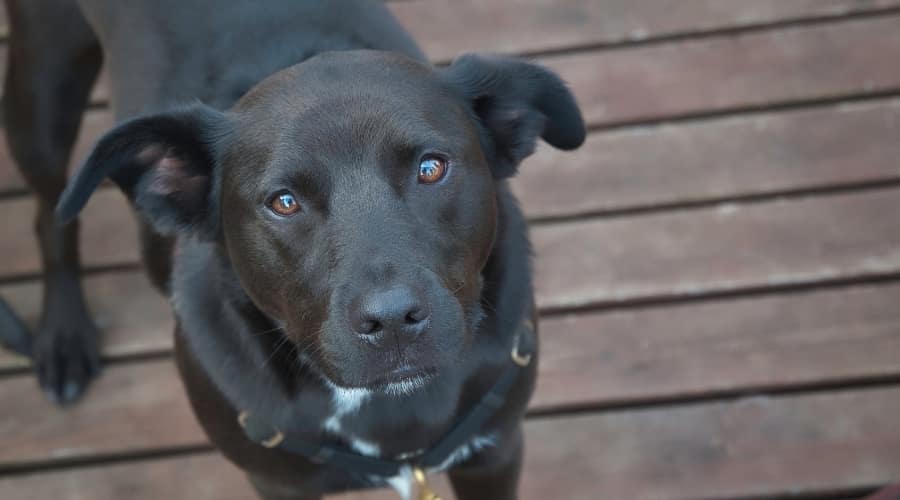
They’re workaholics at heart. Give them a task, and they’ll thrive; give them nothing to do, and they’ll invent a job (like reorganizing your socks by bite pressure). Labraheelers bond hard with their people but need strong leadership and mental stimulation to avoid becoming little tornadoes of mischief.
Inheriting the energy level of both parents, they don’t settle down until around 3 or 4 years of age. The good news is that they are very friendly and usually get along well with both kids and other pets, provided they were raised with them at an early age.
Labraheelers will weigh between 35 and 50 pounds when fully grown. Labraheeler owners should have a larger yard. If you have a smaller yard or living space, ensure your Labraheeler gets at least 60-90 minutes of daily exercise.
7. Rhodesian Labrador (Rhodesian Ridgeback + Lab)
Power, poise, and play, wrapped in a velvet tank.
The Rhodesian Labrador is one of the more athletic, dignified Lab mixes. The Ridgeback brings strength, independence, and a serious protector vibe, while the Lab tones it down with affection and goofball charm.
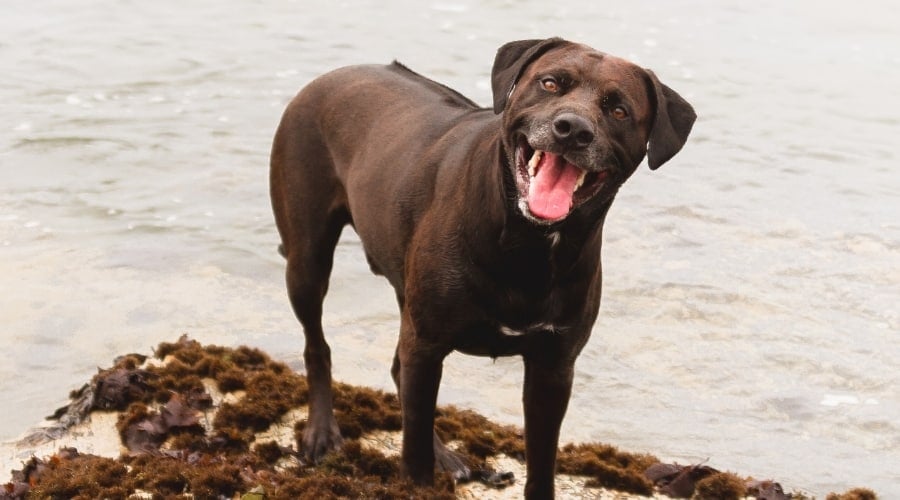
These dogs are confident, courageous, and big, expect 60 to 80 pounds of lean muscle with a side of couch-cuddler.
While they can be wary of strangers, they’re incredibly loyal to their family and do best with calm, experienced owners who offer clear structure. Not hyper, not lazy, just powerful, focused, and secretly snuggly.
Their Ridgeback parent was bred to fight lions and be a protector. As a result, your Rhodesian Lab is going to have a strong-willed temperament and will be a challenge to train. I don’t recommend this mix for first-time dog owners.
They will have shorter coats than most Labradors, but will still shed about as much. Both parent breeds are active, which means your Rhodesian Lab will likely be the same.
8. Vizslador (Vizsla + Lab)
Part rocket, part Velcro, all heart.
The Vizslador is a dream mix for active families who also love a loyal, cuddly companion. Vizslas are known for being affectionate to the point of shadowing you from room to room, and when mixed with a Lab, you get a sensitive, athletic dog who lives to please.
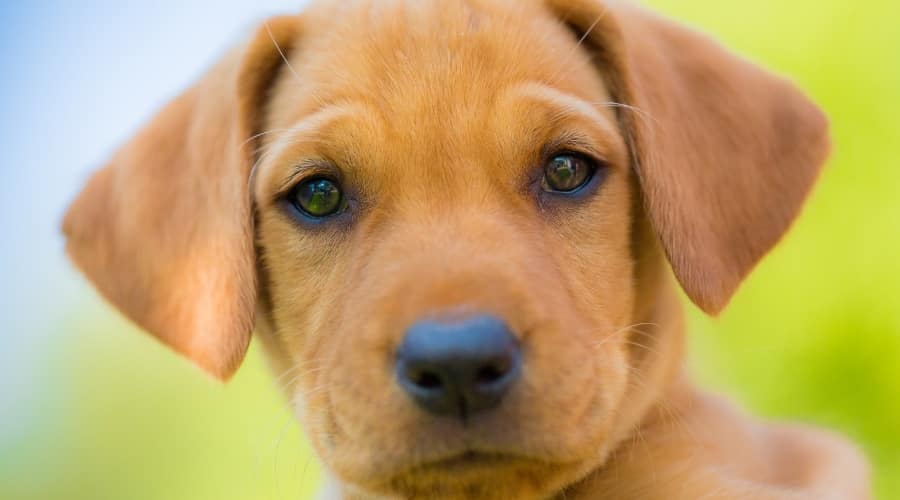
These pups need exercise, and lots of it. They are happiest when they’ve got both physical and mental stimulation (think trail runs and puzzle toys). With their short coats, lean builds, and expressive faces, Vizsladors are a stunning hybrid.
They’re great with kids and other pets, love structure, and would absolutely join you on a marathon if you asked nicely. Vizsladors can be slightly more independent than their Lab parent, so having patience is key during training.
This pup is often mistaken for a Weimaraner, as they are about the same size and have similar coats. The Vizslador will vary in size, typically weighing between 40 and 60 pounds.
10 Chill Companions & Gentle Giant Lab Mixes
Not every Labrador mix is bouncing off the walls. These breeds bring the mellow, whether it’s in a 90-pound floofball or a low-riding hound with a “nah, I’m good” attitude.
Some are built like tanks, but have the souls of lapdogs. Others are just born chill. If your vibe is more lounging in the shade than training for a triathlon, this crew of couch-worthy companions is for you.
They may not be the fastest pups on the block, but they’re steady, affectionate, and deeply committed to the nap life.
1. Alaskan Malador (Alaskan Malamute + Lab)
Looks like a wolf. Cuddles like a weighted blanket.
The Alaskan Malador is a fluffy, snow-loving giant that brings the strength and independence of an Alaskan Malamute to the Labrador’s loyal, people-focused nature. These pups are typically very affectionate family pets that get along well with almost everyone, including children and other pets.
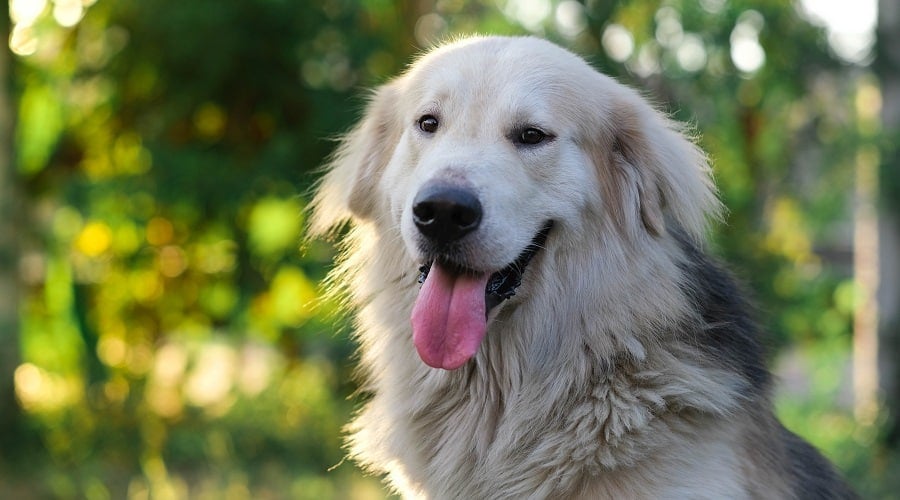
This mix thrives in colder climates, loves being outdoors, and tends to form strong bonds with family. Though don’t expect a Velcro dog. Maladors can be a bit stubborn, but with proper training and patience, they can become calm and affectionate companions.
They need regular exercise, but their energy isn’t frantic; it’s steady and focused. Just prepare for intense shedding and a dog who thinks 60°F is beach weather.
The Alaskan Malador is an intelligent, trainable breed that will love learning tricks and commands. You can expect your puppy to grow to weigh between 65 and 85 pounds, standing up to 25 inches at the shoulder.
2. Anatolian Labrador (Anatolian Shepherd + Lab)
The chillest security system you’ll ever snuggle.
The Anatolian Labrador combines the protective instincts of the Anatolian Shepherd with the gentler nature of the Lab, creating a calm but alert guardian dog.
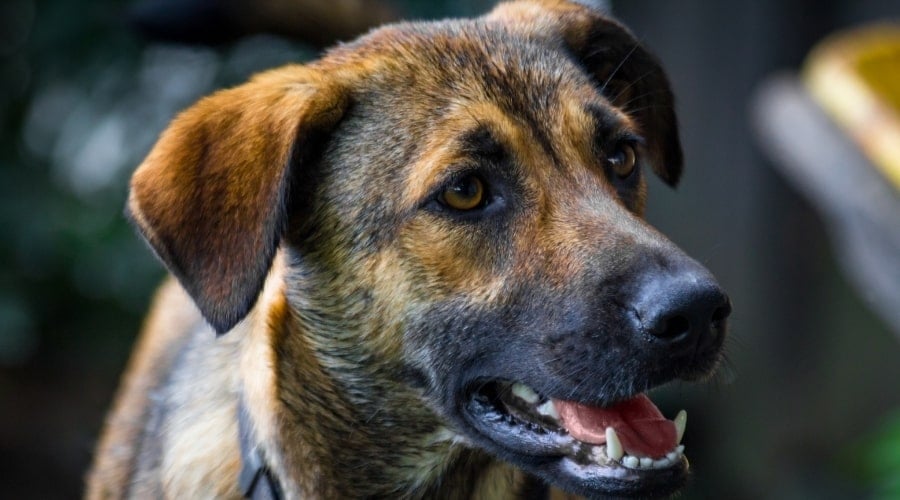
While not overly affectionate with strangers, these dogs are deeply loyal to their people and tend to be more reserved and thoughtful than your typical goofy Lab mix. They’re large, low-key, and surprisingly independent, often content to observe the world from a shady spot instead of chasing it.
With proper training and early socialization, the Anatolian Lab makes a reliable family protector that doesn’t need constant attention… but won’t say no to a slow belly rub session.
Once a stranger has been welcomed into the home, they will treat them just like family. Anatolian Labs will weigh between 60 and 90 pounds when fully grown unless their Anatolian parent is on the smaller side.
Anatolian Labs need room to roam. Because of their Anatolian Shepherd parent, they are used to having farmland to roam and livestock to protect. As farm protectors, they will get along with other animals if properly socialized at an early age.
3. Bassador (Basset Hound + Lab)
Half detective, half doorstop, all heart.
The Bassador is a laid-back blend of Basset Hound chill and Lab sweetness. Picture the long body and droopy ears of a Basset with a splash of Labrador’s social charm, and you’ve got a dog that’s equal parts comic relief and couch potato.
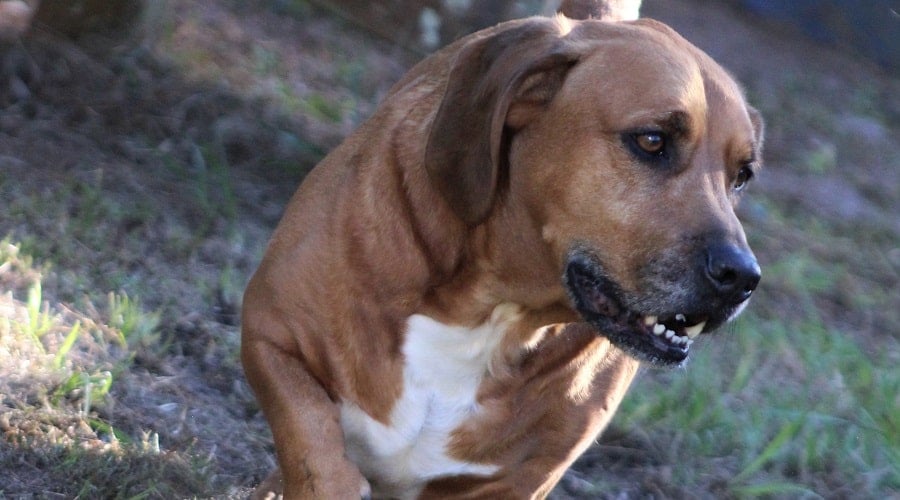
These pups are usually mellow, stubborn in a loveable way, and have noses that get them into more trouble than their legs can outrun. The Bassador is very loyal, although they can be a tad stubborn and challenging to train. In general, Bassadors love to be the center of attention in their human family.
They’re low to the ground, low on energy, and high on personality. Perfect for slower-paced households, they’re affectionate, loyal, and totally content with a lazy afternoon of sniff-walking and supervised loafing.
They also need to have a home with plenty of outside space where they can roam and indulge their passion for sniffing and following interesting scents. The Bassador parent breeds both have high prey drives, meaning that your furry friend may have a tendency to chase after small pets, including the family cat.
As long as you train and socialize your Bassador properly from puppyhood, they can quickly learn to behave appropriately around the other members of the family.
4. Bullmassador (Bullmastiff + Lab)
Quiet tank of a dog that thinks they’re a lap dog.
The Bullmassador looks intimidating at first glance, but they’re gentle giants with an unexpected soft side. The Bullmastiff brings serious size and guarding instincts, while the Lab adds sociability and a lighter energy.
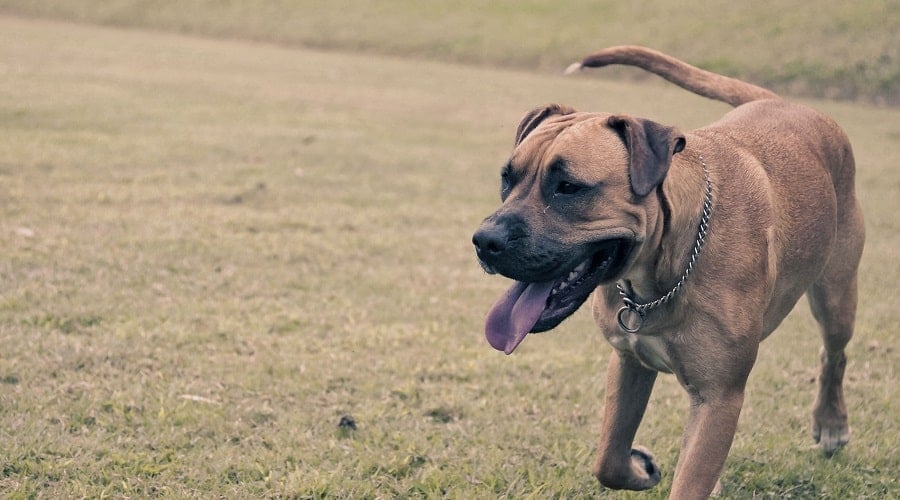
These dogs are strong, calm, and surprisingly low-maintenance once trained. They’re usually quiet, content to lounge, and tend to bond deeply with their people. They are quite trainable but may not be the best choice for a first-time dog owner, largely due to their generous size.
Socialization is key to avoiding overprotectiveness, but once they know their circle, they’re all in, including body slams and leaning. They’ll sit on your feet like it’s their full-time job.
These large dogs can weigh up to 140 pounds and are typically quite tall as well. So, you’ll need a large house to accommodate one of these pups. Despite their size, these dogs do not require a huge amount of exercise; they are content with one long walk every day.
5. Labbernard (St. Bernard + Lab)
Big, sweet, and probably drooling on your shoes right now.
The Labbernard is everything you’d expect from a Lab and St. Bernard mix: huge, huggable, and wildly lovable. These dogs tend to be calm and gentle, with a patient demeanor and a strong affection for their humans.
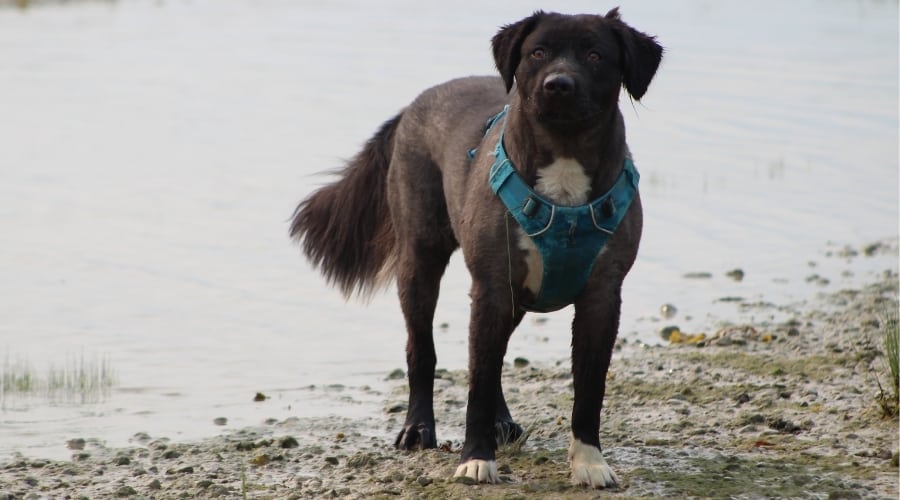
They’re fantastic with kids, tolerant of chaos, and will happily plop down in the middle of a family gathering to soak up attention. Grooming and drool management are part of the deal, but their mellow attitude and oversized heart more than make up for it.
Labbernards can be quite large, inheriting that size from their Saint Bernard parent. If they have a larger Labrador as the other parent, it’s not uncommon to see this mix get close to 120 pounds or more. This is especially true with male Labbernards who can run large.
6. Labloodhound (Bloodhound + Lab)
Part search-and-rescue, part emotional support loaf.
The Labloodhound is a slow-moving, big-hearted scent machine. With the famous nose of a Bloodhound and the friendly spirit of a Lab, this mix is curious, loyal, and always a little distracted.
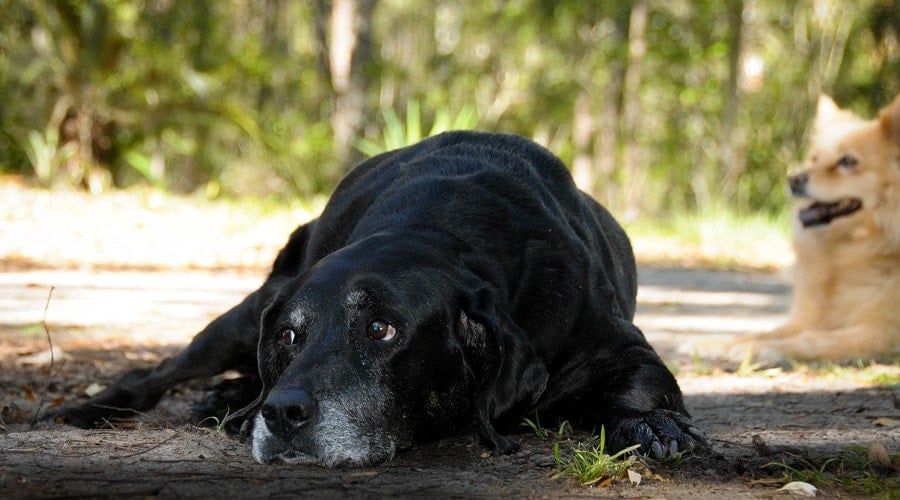
They’re great with families and tend to be gentle, but they’ll follow a smell trail like it’s their life mission, so leashes and fenced yards are non-negotiable.
Expect some drool, some snoring, and a dog who responds well to snacks over strict commands. When they’re not nose-to-the-ground, they’re happy to snuggle and nap like it’s a competitive sport.
Labloodhounds are large dogs, standing up to 27 inches tall and weighing between 70 and 100 pounds. The Labloodhound is gentle and friendly, usually loving everyone, although they can suffer from separation anxiety if left alone for extended periods.
7. Labradane (Great Dane + Lab)
All legs, all love, all over your personal space.
The Labradane combines the size and drama of a Great Dane with a slight reduction in size and drama, while retaining the friendliness of a Lab. The result? A horse-sized companion who wants to cuddle, sit in your lap, and follow you everywhere.
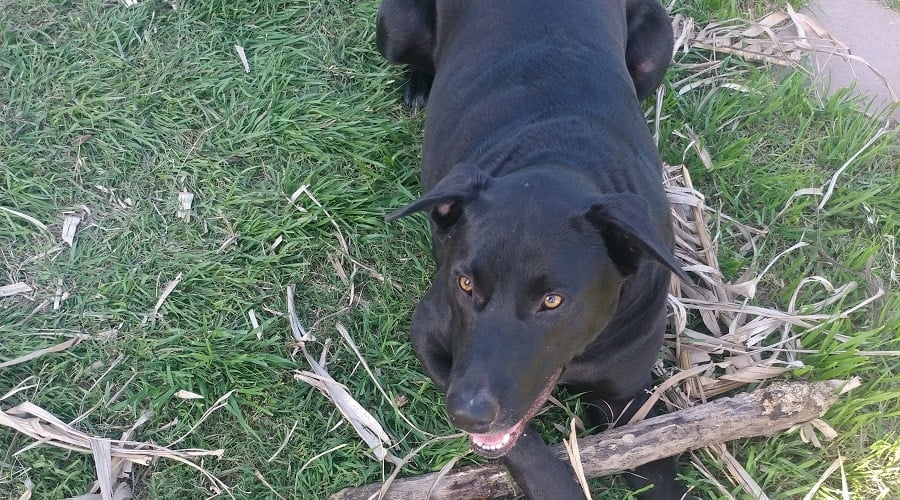
Like all Great Dane mixes, these dogs are gentle, surprisingly low-energy for their size, and often described as “goofy” or “clownish.” Just clear some floor space and keep food off counters. If you want a giant dog with a golden heart, the Labradane’s your pick.
They’re great with kids and other dogs, easygoing around the house, and prone to making you laugh. This big softie is a great choice for a family pet. The breed is relatively rare, but these dogs are sweet-natured and get along well with everyone.
Tolerant and eager to please, the Labradane has a heart of gold and loves human company. For that reason, these pups don’t do well when left alone for long periods and can suffer from separation anxiety.
8. Mastador (Mastiff + Lab)
Big-bodied sweetheart with serious lean-on-you energy.
Mastadors are massive but mellow, combining the sheer presence of a Mastiff with the warmth and trainability of a Lab. They’re calm indoors, moderately active outdoors, and great with kids when properly socialized.
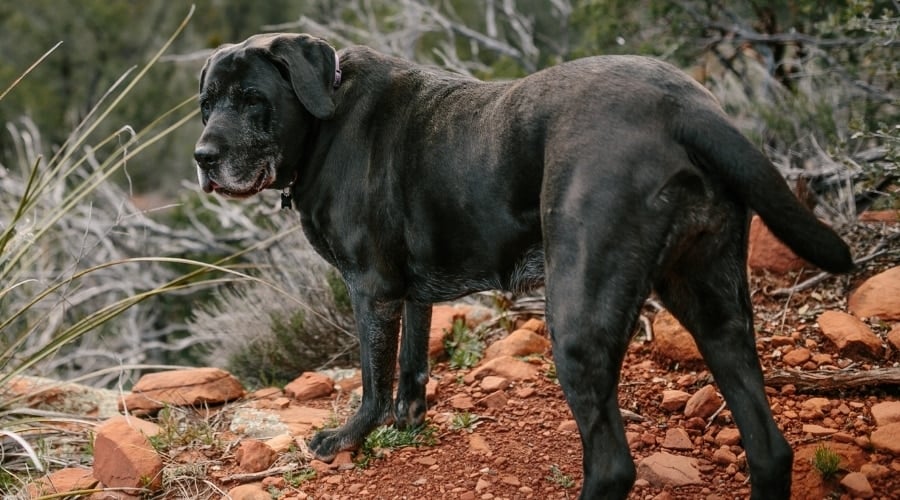
Despite their size, they’re not clumsy or wild. In fact, they’re more likely to quietly follow you than barrel through walls. Their size means early training is crucial, but once they settle, Mastadors are reliable, affectionate, and often hilariously unaware of how big they truly are. You’ll need floor space, lint rollers, and a sense of humor.
Mastadors are one of the more common Mastiff mixes. They are typically adopted by owners looking to adopt a dog with Labrador traits but with a Mastiff’s size. Mastadors are bigger dogs, typically weighing in upwards of 110 pounds or more.
Mastadors have medium-length coats. They can come in a variety of different colors, with black being the most common. In fact, they are commonly mistaken for extremely large Black Labs. It’s also possible for them to carry a lighter coat or even a brindle-colored coat.
Mastadors are well-suited to apartment living. While they will be more active when they are young, they tend to calm down after their first year and become essentially couch potatoes thereafter. Mastadors are wonderful with kids and are generally healthy pups, and can do well in just about any living situation.
9. Newfiedor (Newfoundland + Lab)
Part dog, part lifeguard, part emotional support bear.
The Newfiedor is a gentle, water-loving giant that’s great with kids, cool in a crisis, and content to nap by your feet for hours. Newfoundlands are famously sweet-natured, and when paired with a Lab, you get a dog that’s nurturing, people-focused, and calm even in chaos.
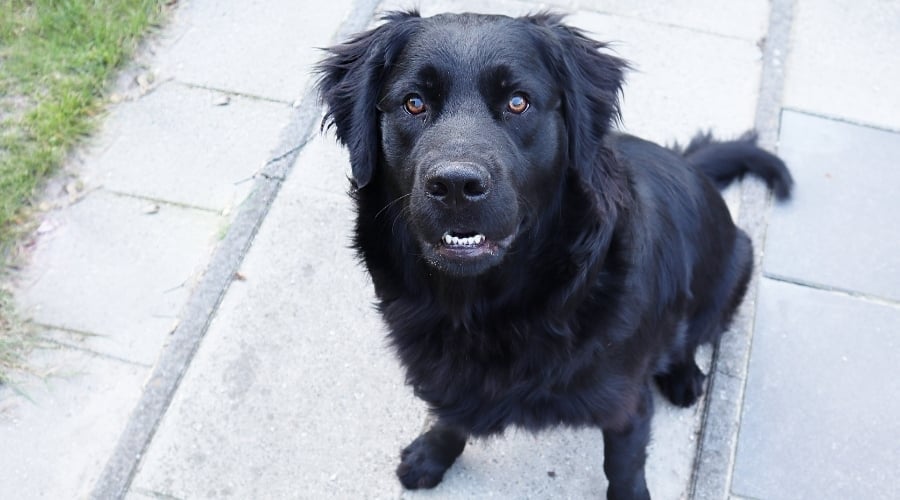
Newfiedors are excellent family dogs. They do well with both children and other pets, provided they are socialized from an early age. While they may be slightly more reserved around strangers than their Labrador parents, they will quickly loosen up once they become comfortable.
Newfiedors are easygoing and easy to train. These dogs are excellent swimmers, patient to a fault, and totally down for family road trips, preferably with AC.
Newfiedors are larger than other Lab mixes, usually weighing between 65 and 90 pounds, depending on their gender and parents. They typically resemble large black Labradors.
Grooming is non-negotiable, but you’ll get endless affection in return. Ideal for families or anyone who wants a dog big enough to double as a weighted blanket.
Their coats will be longer than their Labrador parent, so you’ll need to keep up with grooming as well. Expect them to shed, as they have a double coat. You’ll likely spend time and money keeping up with grooming.
10. Pyrador (Great Pyrenees + Lab)
Floofy guardian angel with a bark that means business.
The Pyrador combines the gentle giant energy of the Great Pyrenees with the social charm of the Labrador. This mix is independent but affectionate, protective but not overly intense.
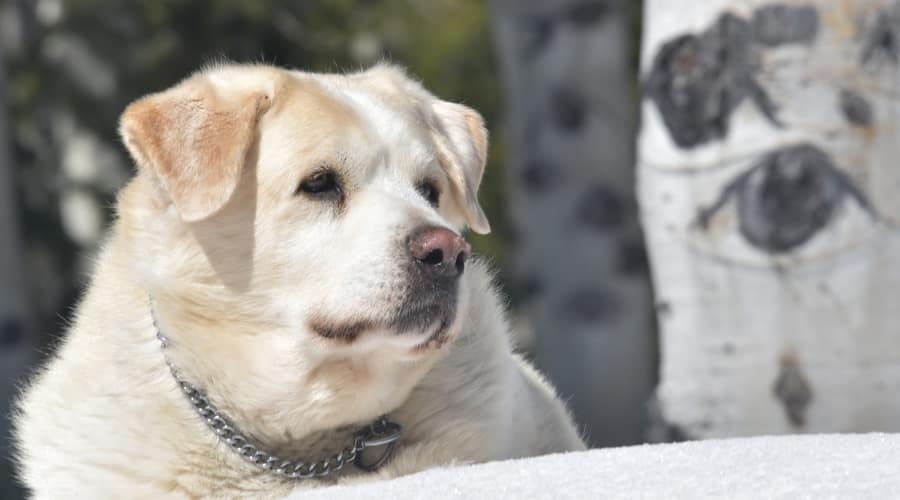
Pyradors are large dogs, and it’s not uncommon for male Pyradors to top 100 pounds or more. They are friendly dogs, but because of their guardian instincts, they are slightly more reserved with strangers.
Pyradors are also excellent with families, although be mindful if you adopt a Pyrador when you have small children, simply due to their size. They do well in homes with space, mentally and physically, and need early socialization to stay chill around strangers.
Pyradors are typically calm indoors and quietly confident, with a bark that’ll stop a stranger in their tracks and a vibe that’ll melt your heart at bedtime. If you want a loyal watchdog who also gives great hugs, this is your dog.
Pyradors are a very balanced companion. Their Pyrenees parent has a more subdued temperament, which helps to calm down some of the higher energy levels their Labrador parent has in their early years.
8 Mini & Compact Labrador Retriever Mixes
Not everyone has room for a 90-pound cuddle monster. These Labrador mixes keep things fun-sized, ideal for smaller homes, apartments, or anyone who prefers their dogs under “lap-compatible” weight.
Don’t let their size fool you, though: many of these mixes pack huge personalities into tiny frames. Whether you want playful, portable, or just a little less fur to vacuum, these pups deliver Labrador charm in a tighter package.
1. Beagador (Beagle + Lab)
Sniffer by nature, snuggler by choice.
The Beagador is a bouncy, nose-driven mix that combines the scent obsession of a Beagle with the eager-to-please nature of a Lab. These dogs are playful, curious, and social, and always ready to follow a trail or flop at your feet.

Beagadors tend to do well with families and other pets, but, like most Beagle mixes, they’re not the most obedient off-leash (because, squirrels). Expect a medium-size pup with an expressive face, soft ears, and a tendency to alert you to every squirrel, car, or suspicious leaf that dares approach your home.
These pups are quite compact, making them suitable for you if you have a bijou home with limited outside space. That said, the Beagador is a lively chap who does need plenty of exercise and attention.
If the Beagle parent is dominant, your puppy may be easily distracted and challenging to train. The Beagador can stand between 18 inches and 24 inches in height, weighing from 24 to 40 pounds.
2. Boston Lab (Boston Terrier + Lab)
Small size, big sass, excellent snuggler.
The Boston Lab blends the spunky charm of the Boston Terrier with the friendly energy of a Lab. You’ll get a medium-small dog with a ton of personality, playful, expressive, and just stubborn enough to keep things interesting.
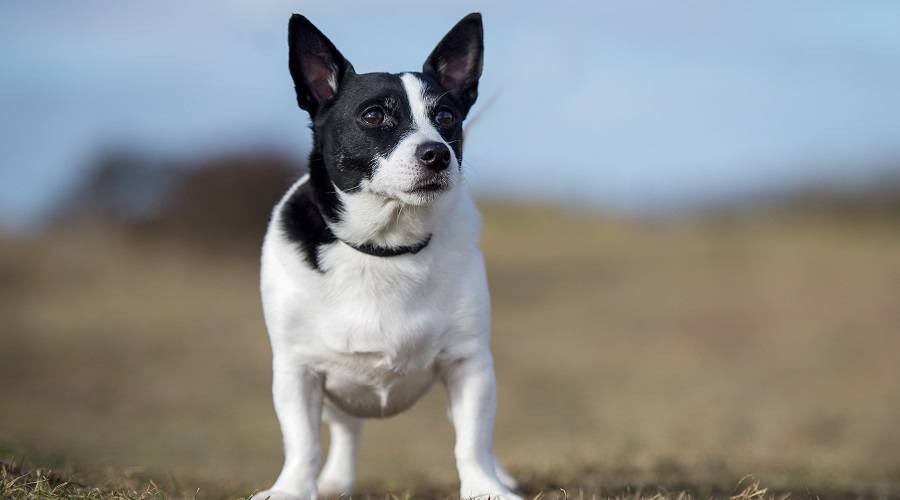
The Boston Lab is a medium-sized dog that usually has a happy, playful nature, being very affectionate and loyal. The Boston Lab is highly trainable and eager to please, making this breed an excellent choice for first-time dog owners.
They’re usually outgoing, good with kids, and like all Boston mixes, have that classic Boston sass, often punctuated with some dramatic sighs or side-eye. Socialization comes naturally to the engaging Boston Lab, and a trip to the dog park is always a winner with these pups.
Boston Labs adapt well to smaller homes and don’t need a ton of exercise, though they’ll happily sprint around the yard or park before crashing into full loaf mode.
3. Cavador (Cavalier King Charles Spaniel + Lab)
Royal vibes with a goofy twist.
The Cavador is pure cuddle fuel. This mix softens the Lab’s boisterous energy with the gentle, affectionate nature of the Cavalier King Charles Spaniel. They’re smaller than your average Lab mix and tend to be calm, easygoing, and extremely people-focused.
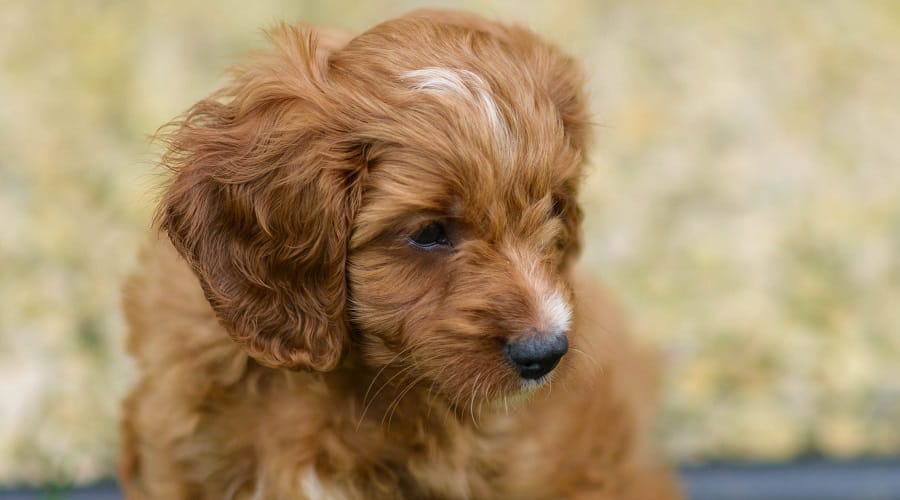
These dogs adore companionship, human or canine, and don’t enjoy being left alone for long. With their soft coats, soulful eyes, and “please love me forever” energy, they’re ideal for cozy homes, mellow lifestyles, and anyone who wants a full-time lap companion with just enough goofiness to keep things interesting.
Cavadors are medium-sized dogs that can weigh up to around 55 pounds. These are wonderful family canine companions who get on well with other pets and children.
Lively and inquisitive, the Cavador does need plenty of physical exercise. On the plus side, these pups require minimal grooming to maintain their silky coats in good condition. A healthy Cavador can live to around 15 years.
4. Corgidor (Corgi + Lab)
Short legs. Big energy. Endless comedy.
The Corgidor might look like a Labrador in fun-size mode, with the classic Corgi low-rider frame and a whole lot of personality crammed in. These dogs are hilarious, smart, and surprisingly athletic despite their short legs.

The herding instincts from the Corgi side may show up in the form of ankle-nipping or “bossy toddler” behavior, but it’s all part of their charm. Corgidors need stimulation and play, but they’re also down for naps and couch time. Bonus: the way they run is pure joy.
If looking for a smaller dog, you might want to consider the Corgidor. They weigh between 30 and 50 pounds, standing up to around 15 inches in height or taller, depending on which parent the puppy predominantly takes after.
Like most Corgi mixes, these pups are usually very family-friendly, living for up to 13 years. Bear in mind that both parent breeds are working dogs, so the Corgidor does need plenty of exercise and play sessions.
5. Dachsador (Dachshund + Lab)
Stretch limo body. Big dog attitude.
The Dachsador is a long, low blend of Dachshund sass and Labrador friendliness. This mix often results in a funny-shaped dog with a ton of character. Small but bold, affectionate but a little mischievous.
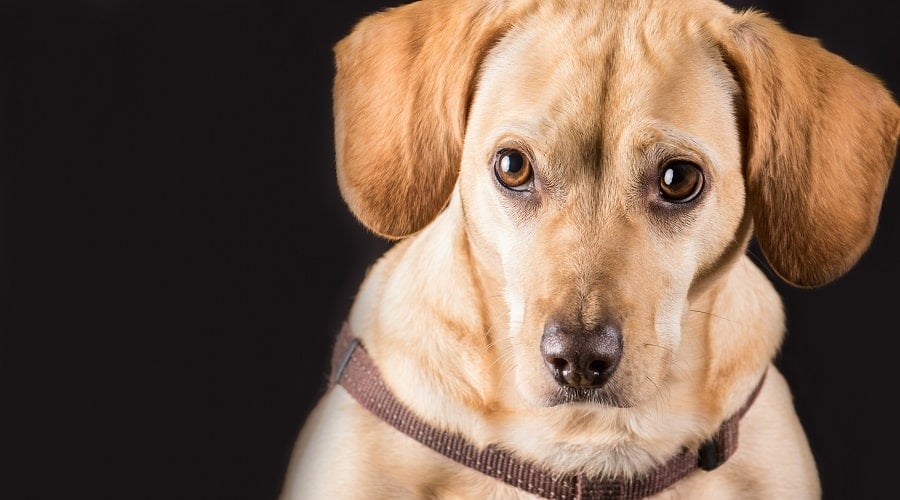
Dachsadors are alert, curious, and love to dig, sniff, or burrow under blankets like it’s their job. They’re great for people who love a quirky companion with plenty of personality in a compact, cuddle-ready package. Just be careful with stairs and jumping, their little backs can be sensitive.
The Dachsador is a motivated and energetic breed, making them a wonderful companion and family pet. These little pups are low-maintenance when it comes to grooming requirements and don’t require a huge amount of exercise to stay fit.
Many Dachsadors err on the small side, standing between 15 and 25 inches in height and weighing around 30 to 40 pounds. The breed’s body shape generally takes after that of the Dachshund parent.
6. Labrahuahua (Chihuahua + Lab)
Built like a small potato. Acts like it owns the house.
The Labrahuahua is the ultimate odd couple: the feisty, fiery Chihuahua meets the friendly, fun-loving Lab. The result is wildly unpredictable in size, temperament, and ego, but always entertaining.
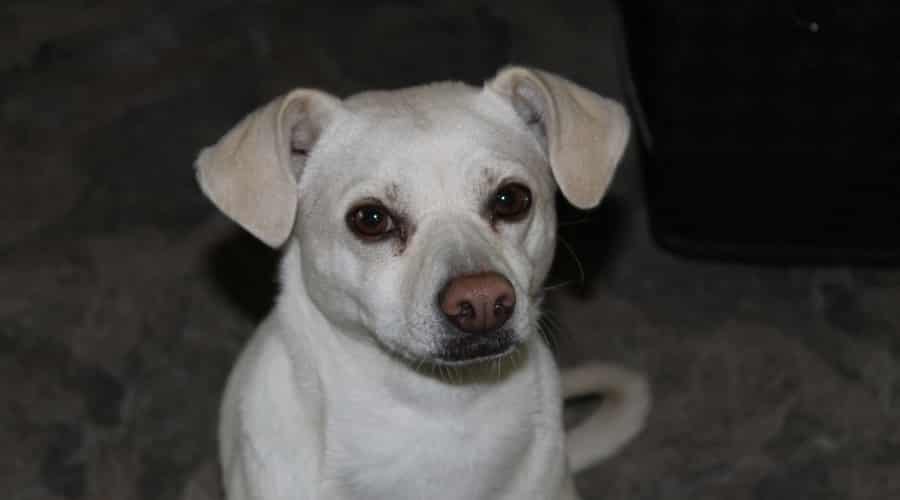
This mix is created with a Labrador mother and a Chihuahua father. Their size makes this virtually the only way this mix can happen. These dogs are usually small to medium, with big personalities and no clue they aren’t huge. They can be loyal, sassy, and surprisingly brave.
Socialization and positive training are key to keeping the attitude in check, but in the right hands, the Labrahuahua is a hilarious, one-of-a-kind companion with big feelings and a soft side.
Labrahuahuas are usually medium-sized, weighing anywhere between 20 and 40 pounds, depending on the gender of the dog. Labrahuahuas are active dogs.
They are resilient pups and can live in a variety of different living conditions. Labrahuahuas will thrive in almost any living situation, as long as they are near their owners. They are excellent family dogs and shouldn’t exhibit any of the aggressive traits that their Chihuahua parent notoriously carries.
7. Pugador (Pug + Lab)
Smush face meets happy tail. Built for maximum couch time.
The Pugador is a low-key, affectionate mix that combines the Lab’s friendliness with the Pug’s laid-back vibe. These dogs tend to be small to medium in size, with squishy faces, wiggly butts, and a major fondness for snacks.
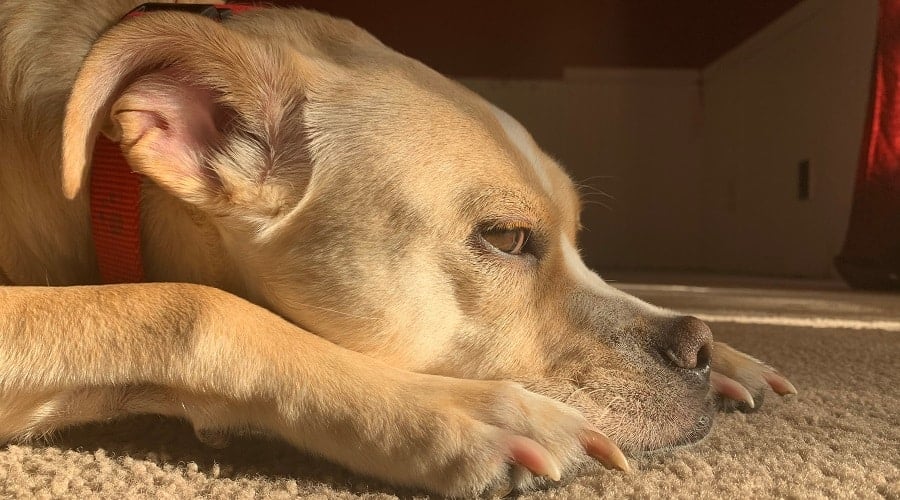
The Pugador is a very unusual crossbreed that’s not often seen at the dog park. The Pugador is usually a small or medium-sized dog, weighing up to 50 pounds.
They’re social, silly, and often totally content lounging around with their humans. While they might get a zoomie or two in, they’re mostly couch dwellers at heart, making them ideal for apartment life or chill households.
The breed is usually friendly and good with children and other pets, and loves to be around their human family. The average life expectancy of a Pugador is around 15 years. Like other Pug mixes, they might inherit brachycephalic syndrome. But you can be sure that their snoring will rival your uncle’s after Thanksgiving dinner.
8. Spanador (Cocker Spaniel + Lab)
Floppy ears, waggy tail, and 24/7 best friend energy.
The Spanador is a sweet, happy-go-lucky mix that combines the friendly energy of a Lab with the softness and sensitivity of a Cocker Spaniel. These dogs are affectionate, playful, and great with families.
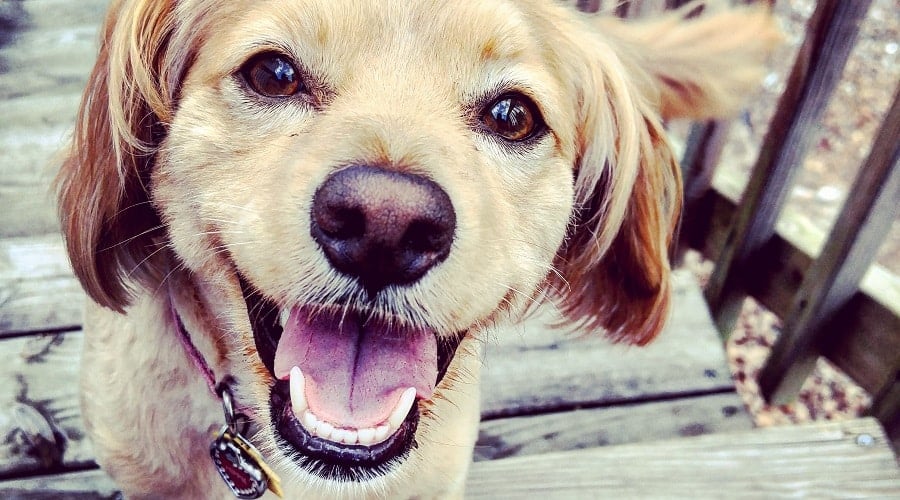
They’re typically medium-sized with expressive eyes, soft coats, and a tail that never seems to stop wagging. Although both parents are working breeds, the Spanador is just as happy curling up on your lap as they are running through the fields on an adventure.
Like most Cocker Spaniel mixes, Spanadors are social and eager to please, but can also be a little needy. They thrive on human attention and don’t love being left alone for long. Think emotional support dog with bonus fetch skills.
Spanadors are highly trainable and love to participate in canine agility sports, including agility and dock-diving. An adult Spanador can grow to stand 20 inches tall at the shoulder, weighing between 20 to 50 pounds. These good-looking, healthy pups can live for up to 15 years and are a healthier Labrador mix.
8 Popular Designer & Family Favorites
These Labrador mixes didn’t just happen by accident. Many were intentionally bred for looks, temperament, or that “perfect family dog” combo. Some have gone full mainstream (looking at you, Labradoodle), while others are low-key favorites among active households or breed fans in the know.
What do they all have in common? Friendly vibes, loyal hearts, and enough charm to win over even the most stubborn “not a dog person” types.
1. Borador (Border Collie + Lab)
Smart, speedy, and just barely containing its enthusiasm.
The Borador is a brainy blur of energy, combining the precision and problem-solving of a Border Collie with the friendliness of a Lab. These dogs are high-drive, highly trainable, and absolutely require both mental and physical exercise to stay healthy and balanced.
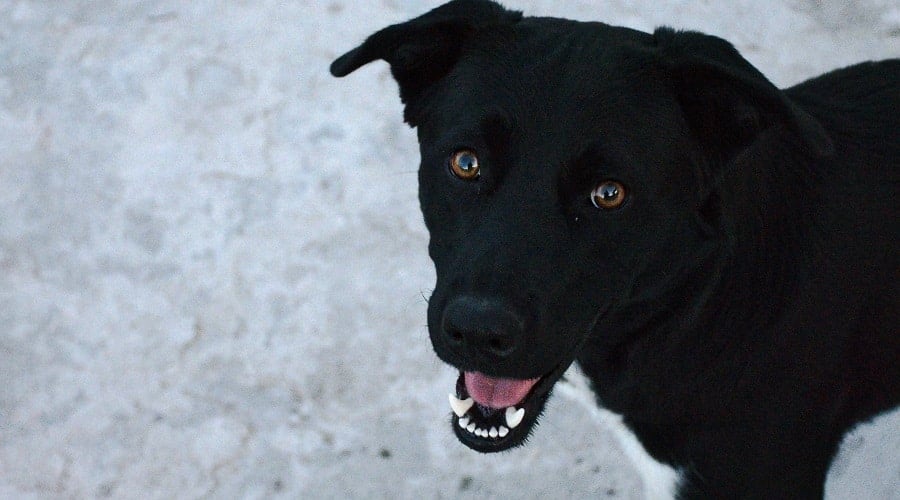
Left bored, they’ll invent jobs (like reorganizing your laundry by scent or herding the cat). Boradors are great for active families, agility lovers, or anyone who wants a dog that can practically read your mind. Just know that “off switch” isn’t standard equipment.
The super-energetic Borador is a medium-sized dog that can weigh between 30 and 80 pounds, depending on which parent the pup takes after the most.
Boradors have thick, double coats that shed continually, especially during the spring and fall, when heavy shedding occurs as the seasons and temperatures change. The Borador is a generally healthy breed that can live for up to 15 years.
2. Boxador (Boxer + Lab)
Wiggle-butt goofball with a boxer’s bounce and a Lab’s loyalty.
The Boxador is a high-spirited, people-loving mix that brings together the Boxer’s playful, energetic personality with the Labrador’s happy-go-lucky charm. These dogs are active, muscular, and love to be part of everything, from family outings and fetch sessions to simply relaxing in the living room with their tongue out.
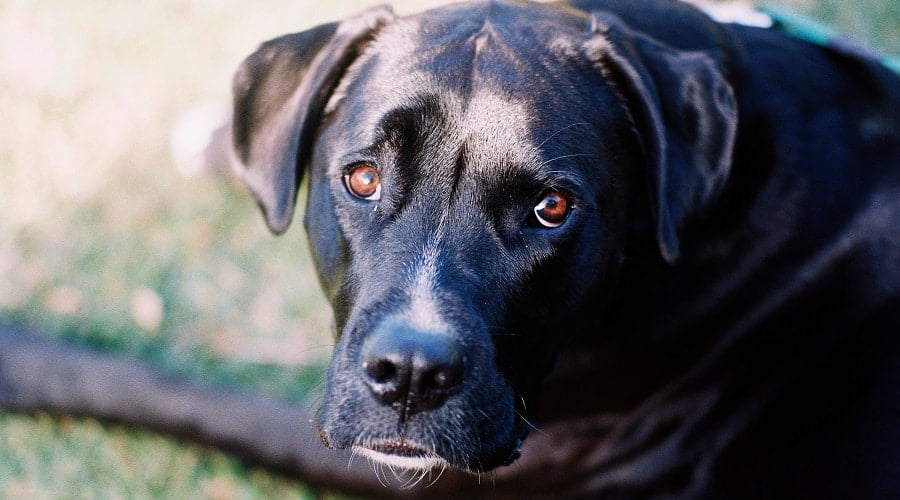
Like most Boxer mixes, they’re goofy, affectionate, and great with kids, though a bit clumsy in tight spaces. Early training helps tone down their exuberance, but honestly, their chaos is part of the appeal. You’ll never be bored with a Boxador around.
These super-lively dogs grow to be quite large, weighing up to 80 pounds and standing up to 18 inches at the shoulder. The Boxador’s coat is usually short and sheds continually, although regular grooming can help to keep mess around your home to a minimum.
The Boxador is the life and soul of the party at the dog park. These pups are protective, kind, and loyal to their human family, behaving like overgrown puppies most of the time.
Consequently, you’ll need a large home with plenty of outside space where your Boxador can burn off some of his excess energy between walks.
3. Goldador (Golden Retriever + Lab)
The golden child of dog mixes, literally.
The Goldador is what happens when you cross two of the most universally beloved breeds on the planet: the Golden Retriever and the Labrador. The result is a friendly, affectionate, eager-to-please dog that’s basically engineered to be a great family pet.
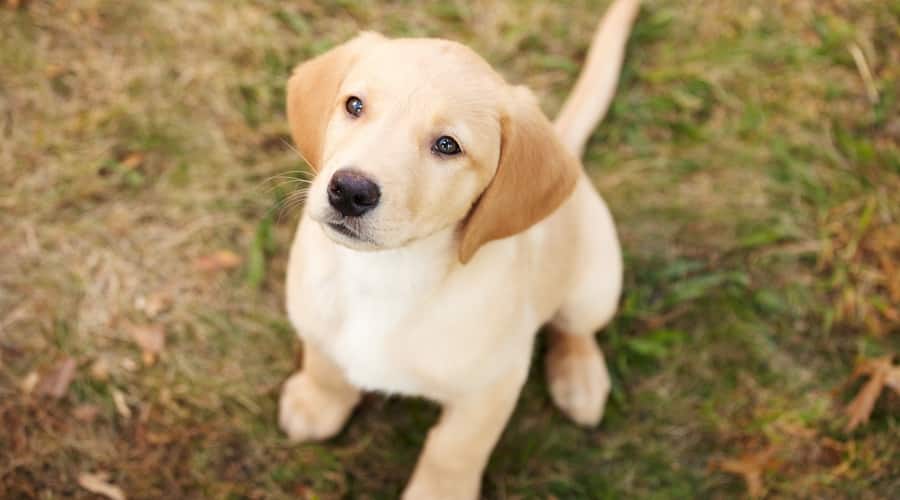
They’re social, gentle, and extremely trainable, which is why they’re often used as service or therapy dogs. Goldadors are happiest when they’re with their people and will shadow you from room to room like a fluffy, tail-wagging assistant manager.
The Goldador is a large dog, usually weighing between 55 and 80 pounds. If you take on one of these pups, you’ll need a large house with plenty of outside space. Additionally, these are energetic working dogs that require daily exercise to stay fit and mentally stimulated.
The Goldador typically has a thick, double coat similar to that of both parent dogs and is a very popular Golden Retriever mix. Goldadors shed all year round, having two heavy shedding periods during the spring and fall. They shed like it’s a competitive sport, but you’ll forgive them daily.
4. Labradoodle (Poodle + Lab)
Fluffy, funny, and slightly judgmental, but in a cute way.
The Labradoodle is one of the OG designer dogs, originally bred for allergy-friendly service work. These curly-coated pups are smart, active, and endlessly charming. The Poodle brain gives them an edge in obedience and problem-solving, while the Lab side keeps them social and silly.
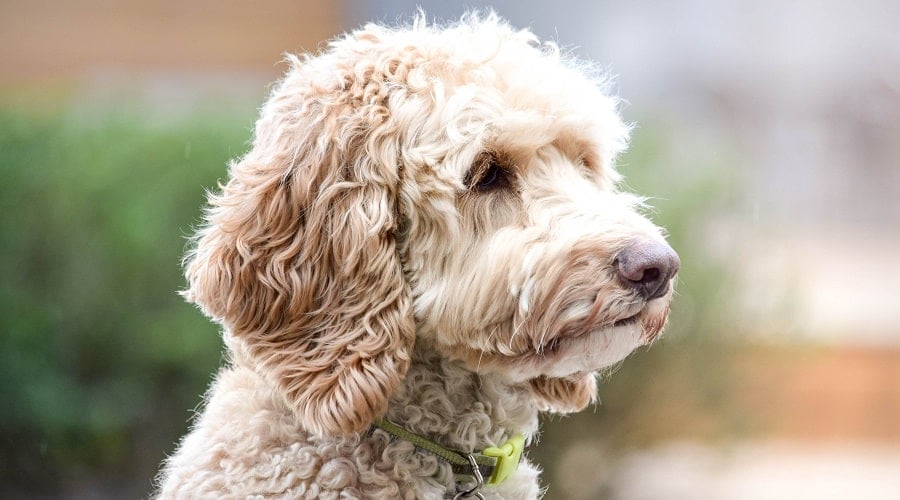
Coat types vary, from tight curls to shaggy waves, and so does the grooming effort required. Labradoodles thrive in active households where they can be mentally and physically engaged. If you want a dog that looks like a teddy bear and might also know more words than your toddler, this is it.
The Labradoodle is designer dog royalty, and they look every bit the part. These pups are one of the most popular and frequently seen poodle mixes around. The breed is quite long-lived, having a life expectancy of up to 18 years.
Labradoodles come in three sizes, standard, medium, and miniature, depending on the type of Poodle parent used to create the mix. So, your dog could stand from 14 to 26 inches tall at the shoulder, weighing between 25 and 95 pounds.
The Labradoodle is a friendly, easygoing sort of pup that usually fits in well in homes where the family includes small children and other pets. That said, these dogs do require plenty of exercise every day and are not couch potatoes.
One of the primary reasons Labradoodles are so popular is their low-shedding coat, making the breed a good choice for families with pet allergies.
5. Labmaraner (Weimaraner + Lab)
Silver ghost meets golden goofball.
The Labmaraner is a sleek, athletic dog with the striking look of a Weimaraner and the friendly demeanor of a Lab. These mixes tend to be energetic, loyal, and slightly dramatic.
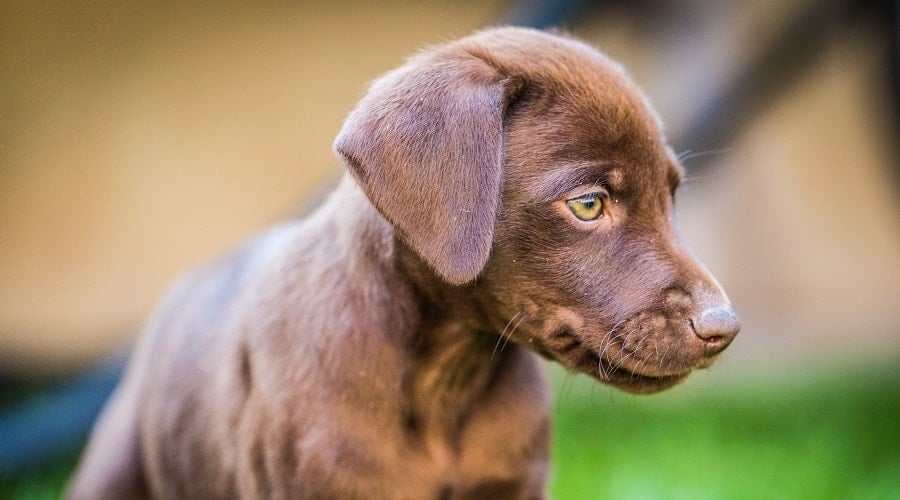
They bond closely with their families and dislike being left alone, often shadowing their loved ones as if it were their personal mission. Labmaraners are great for active households that can keep up with their energy and need for attention.
Bonus: they often come in stunning silvery-gray coats and have a habit of posing like dog models, whether you asked or not.
These are large, lively Weimaraner mixes that are powerful and athletic, requiring a lot of exercise to keep them fit and healthy. If you and your family enjoy spending lots of time in nature and outside, a Labmaraner could be the perfect choice for a canine companion.
The Labmaraner usually weighs around 55 to 90 pounds, standing up to 20 inches at the shoulder. Their coat is short and easy to groom, shedding lightly all year round and more heavily in the spring and fall.
6. Pointerdor (Pointer + Lab)
Laser-focused nose with a Lab’s party-animal energy.
The Pointerdor is a bird dog hybrid that lives to sniff, chase, and make you laugh. Pointers bring a strong prey drive and sharp instincts to the mix, while the Lab softens the edges with silliness and a willingness to please.
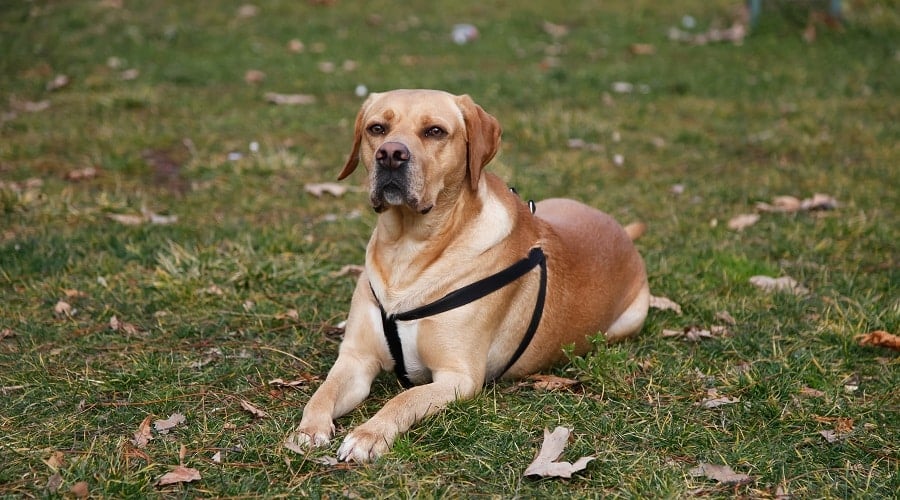
If you’re looking for a dog that has a true sporting pedigree, look no further than the Pointerdor. They usually grow to stand around 20 inches high, weighing between 40 and 80 pounds.
Both breeds are hunting and sporting dogs, so one of these pups would suit you perfectly if you enjoy taking part in field sports and want a canine companion to join you in your outdoor adventure pursuits.
These dogs are ideal for active owners, particularly those who enjoy hiking, running, or hunting. Training is key, especially with recall, but once dialed in, Pointerdors are loyal, loving, and impressively athletic. Also, those expressive ears and focused stares? Absolute scene-stealers.
These are energetic dogs that do need plenty of exercise every day. A bored Pointerdor will howl and dig to amuse themself, which can be quite a disturbance. For that reason, you can not leave this breed alone for long periods.
The friendly, loyal Pointerdor has a short coat that’s easy to maintain, although they shed continually, so they might not suit someone who can’t tolerate dog hair over their home and clothes.
7. Rottador (Rottweiler + Lab)
Muscle, manners, and major loyalty in one handsome package.
The Rottador combines the protective instincts and calm confidence of a Rottweiler with the sociability of a Labrador. These dogs are strong, smart, and deeply devoted to their families.
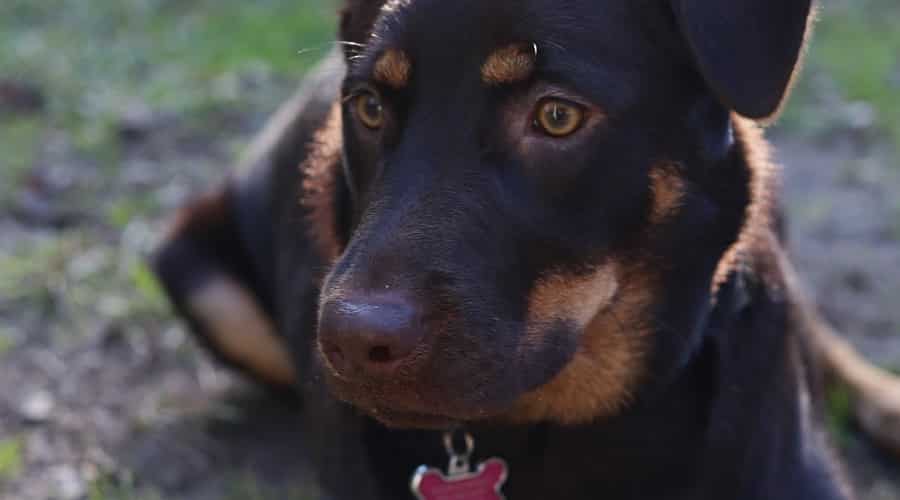
With early training and socialization, they become affectionate, obedient, and surprisingly gentle, especially with children. Without structure, though, they can become bossy or overprotective.
Rottadors need firm, consistent leadership and lots of bonding time. Treat them right, and you’ll have a reliable companion who’ll stick by your side like a very fluffy bodyguard.
Like most Rottweiler mixes, these are large dogs, weighing between 55 and 135 pounds and standing up to 27 inches tall at the shoulder. The Rottador usually has a short coat that sheds moderately year-round and needs grooming once a week or so to keep them looking smart.
You will need plenty of space in your home to accommodate one of these pups. These are intelligent pups who are willing to learn and eager to please, making the Rottador a cinch to train.
That said, these are lively dogs who need plenty of daily physical exercise. A bored Rottador can become destructive, so be sure to provide your pup with plenty of toys to keep them entertained when you’re not around.
8. Springador (Springer Spaniel + Lab)
All bounce, all heart, all up in your business.
The Springador is a cheerful, energetic mix that combines the Lab’s friendliness with the Springer Spaniel’s athleticism and zest for life. These dogs are affectionate, social, and always ready for action, whether it’s fetch, swimming, or a full-body wiggle when you walk in the door.
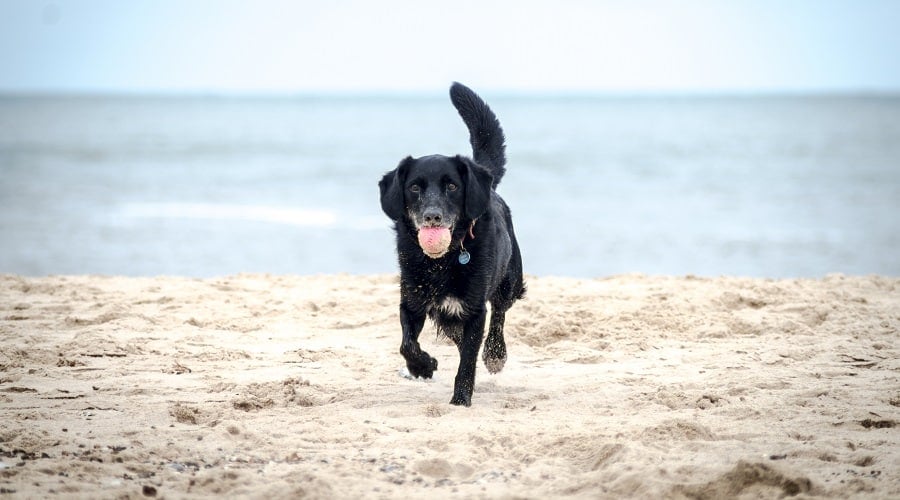
They’re great with families and other pets, but do best with regular exercise and mental stimulation to keep them from going full gremlin. Expect constant tail wags, Velcro-like behavior, and a soft, expressive face that often gets them out of trouble.
Springadors are high-energy dogs that usually have a very strong prey drive. That means that these pups don’t mix well with small furries, such as rabbits and cats, although they do get along with kids of all ages.
Although trainable and willing to please their owners, the Springador, like many other Springer mixes, requires inclusion in every aspect of family life and struggles to cope if left to their own devices for extended periods.
These are quite large dogs, standing up to 20 inches tall at the shoulder and weighing between 40 and 80 pounds. Both parent breeds have long, double coats that shed year-round, with heavier shedding in spring and fall. Therefore, regular grooming is necessary to prevent the coat from becoming tangled and matted.
17 Rare & Unexpected Labrador Retriever Mixes
These Labrador mixes aren’t household names, and that’s part of their appeal. Whether they’re under-the-radar, geographically niche, or just plain surprising, these hybrids offer a fresh take on what a Lab can become.
Some bring out unique physical traits, others inherit working-dog instincts or exotic lineage. If you’re into dogs that spark conversation at the park (followed by “Wait… that’s a Lab mix?”), this lineup is your jam.
1. Afador (Afghan Hound + Lab)
Graceful glam meets backyard chaos.
The Afador is a walking contradiction in the best way: the long, flowing elegance of an Afghan Hound mixed with the muddy-footed friendliness of a Labrador. These dogs are athletic and aloof, affectionate yet independent.
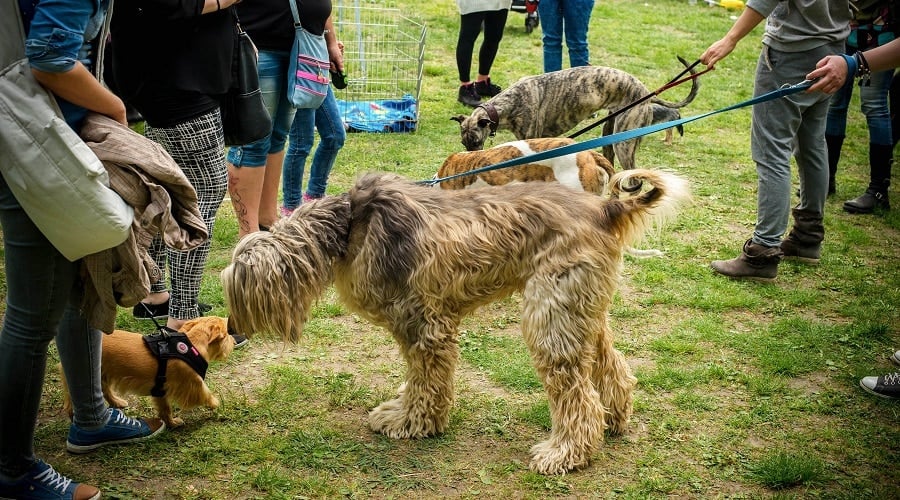
The handsome Afador is a rare and unusual cross. These are tall, athletic dogs that require a lot of exercise to keep them happy. A full-grown Afador can grow to weigh up to 75 pounds.
The Afador lacks the super-friendly, outgoing personality of the Labrador Retriever and is usually a little more aloof, taking after the Afghan parent. Although these pups make the perfect family pet for families with older kids, they are not suited to novice dog owners, as they can be willful and tricky to train.
Afadors need space to run and time to bond, but they reward patient owners with unexpected bursts of goofball energy wrapped in a supermodel coat. This is not your average fetch enthusiast or dog model.
2. American Bullador (American Bulldog + Lab)
Equal parts linebacker and lap dog.
The American Bullador combines the sturdy, muscular build of an American Bulldog with the friendly, high-spirited energy of a Lab. These dogs are strong, protective, and full of personality.
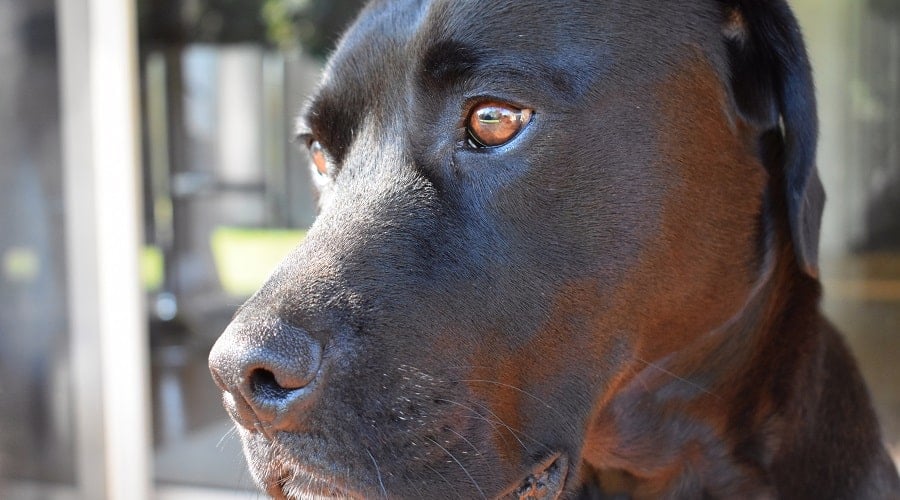
While they can be a little stubborn, they’re also surprisingly sweet and affectionate with their people. Early training and socialization go a long way to curb their “I know best” moments.
You’ll find the American Bullador to be a loyal, brave, protective dog. They’re ideal for active homes with confident owners who want a loyal sidekick that doubles as a backyard bouncer.
The size of the American Bullador varies significantly, depending on which parent the puppies resemble most. Typically, American Bulladors stand around 25 inches tall at the shoulder and weigh between 55 and 85 pounds.
The American Bullador’s coat is short and low maintenance, requiring brushing once a week or so. Coat colors and markings vary, but the most common colors are brown, black, red, tan, or yellow, often combined with white.
Be aware that if your puppy takes more after his Bulldog parent, his muzzle may be short and flattened. That can predispose the dog to a range of respiratory problems, including brachycephalic syndrome.
3. American Lattle (Australian Cattle Dog + Lab)
Will herd your family. And possibly your mail.
The American Lattle is a whip-smart, high-energy mix made for work and mental stimulation. The American Cattle Dog side brings focus, drive, and a touch of mischief, while the Lab adds warmth and sociability. These dogs are always thinking and always watching.
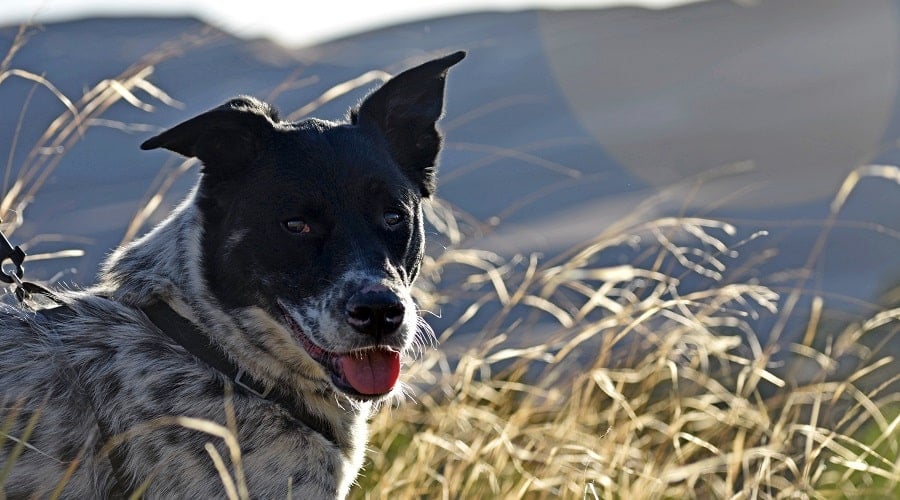
Without daily structure and a job to do, they’ll invent their own chaos (like chasing shadows or organizing your furniture). But in the right hands, a Lattle is one of the most responsive and rewarding dogs you’ll ever meet.
After a hard day’s hiking, hunting, or taking part in dog agility events, the Lattle loves nothing more than to curl up in front of the fire and settle in with their family for the night. Lattles do shed continually, so these pups need brushing at least once a week.
4. Belgian Lab (Belgian Malinois + Lab)
Your loyal shadow with tactical precision.
The Belgian Lab is intense, driven, and not for the faint of heart. Belgian Malinois are used in police and military work for a reason. They’re sharp, athletic, and incredibly responsive to training. Mix that with a Lab, and you get a softer, slightly more approachable version of that work ethic.
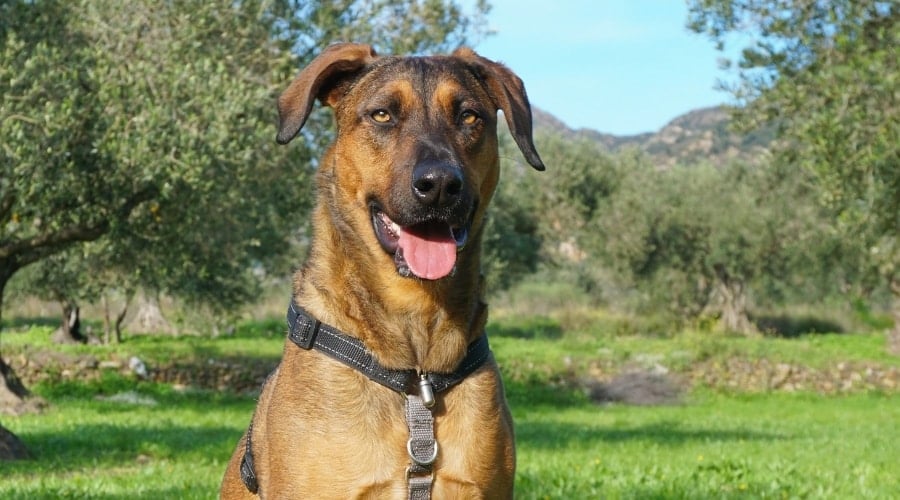
Belgian Labs require experienced handlers and daily mental and physical stimulation. But if you’re up for the challenge, they’ll reward you with total devotion and an unmatched level of canine IQ.
Like all Belgian Malinois mixes, Belgian Labs are active dogs, as both parents enjoy having jobs to do. They are highly trainable and very independent. The Belgian Lab will inherit this independent trait, making them more challenging to train than other Lab crossbreeds.
Belgian Labs will grow to be between 50 and 70 pounds in size, depending on their gender. They can have a variety of different coat colors, but having a black coat is quite common as both parents carry black coat genes.
Belgian Labs will do well with families and other pets, provided they are socialized from an early age. Due to their high activity needs, I only recommend adopting a Belgian Lab if you have a larger yard.
5. Chabrador (Chow Chow + Lab)
Fluff, dignity, and a “maybe I’ll listen” attitude.
The Chabrador is an unusual mix of independence and friendliness. Chow Chows are known for being regal and a little aloof, which makes for a more introverted Lab-combo than most. These dogs can be stubborn, but they are intensely loyal to their families.
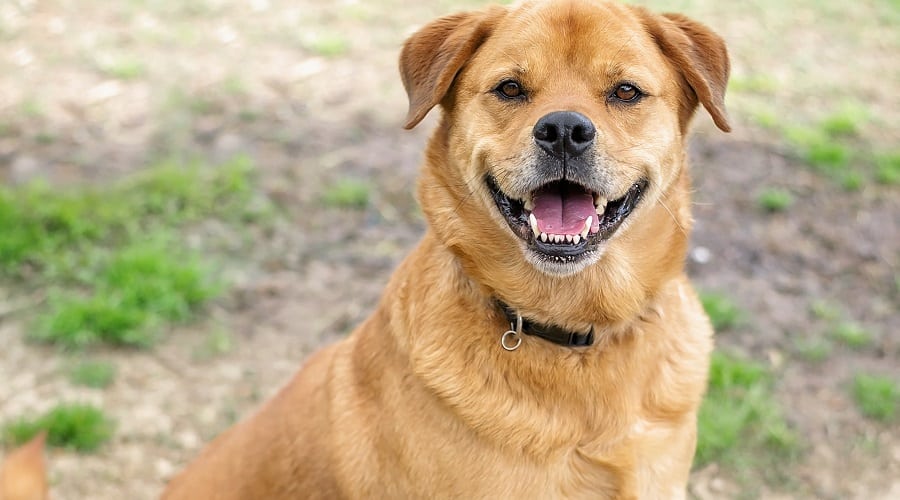
They often inherit a dense, lion-like coat that requires regular grooming and a temperament that demands early socialization. Think of the Chabrador as a Lab that might love you, but only on their terms.
While the Labrador Retriever is a happy-go-lucky, friendly character, the Chow Chow can be more aloof and reserved, especially with strangers. They can be a one-person dog that’s best suited to a couple or a singleton with no children in the family.
Although the breed’s exercise requirements are pretty modest, you will need to have plenty of time available for grooming your dog, as the Chabrador has a thick double coat that sheds constantly.
6. Dalmador (Dalmatian + Lab)
Polka dots and boundless energy.
The Dalmador is a striking, energetic mix with a lot of drive and a flair for dramatics. Dalmatians are known for their stamina and occasional stubborn streak, and when mixed with a Lab’s enthusiasm, you get a dog that’s always moving, always curious, and occasionally full of chaos.
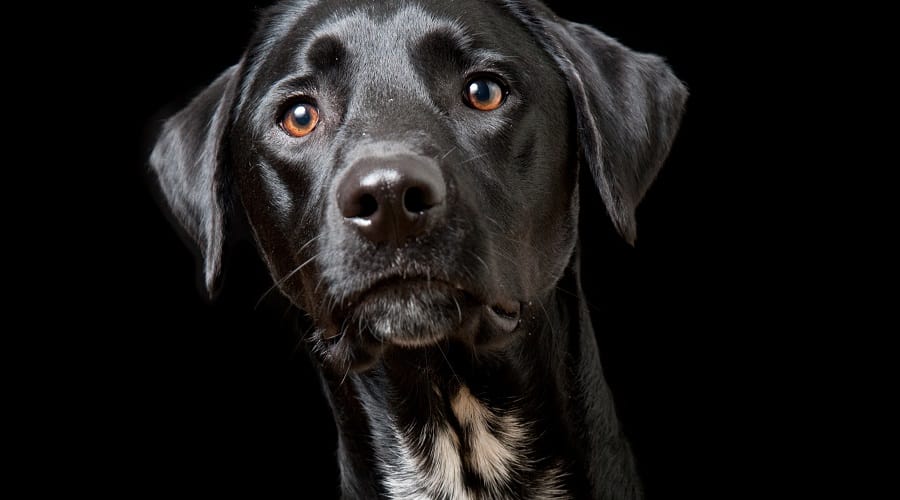
These dogs thrive best with active families, runners, or individuals who enjoy hiking. They’re loyal and loving, but definitely not couch potatoes. Bonus: they’re eye-catching enough to stop traffic, just keep them on a leash when they try.
Dalmatian mixes are always going to be interesting due to their spotted coats. The Dalmador has a short, dense double coat that sheds continually with two heavy shedding periods in the spring and fall. They are typically medium to large-sized dogs.
Overall, Labs have little in common with Dalmatians. But when you cross them, you end up with very social characters who love to be around other pets, dogs, and kids.
They are highly protective of their human “pack,” and they make a great guard dog, too. Dalmadors are very smart. This means your puppy will need a consistent approach when it comes to training, as he can be something of a handful.
7. Dutch Lab (Dutch Shepherd + Lab)
Athletic brainiac with a working dog’s focus.
The Dutch Lab is a rare, intense mix that brings serious mental horsepower. Dutch Shepherds are known for being agile, obedient, and driven to work, and Labs balance that out with sociability and a slightly more laid-back energy.
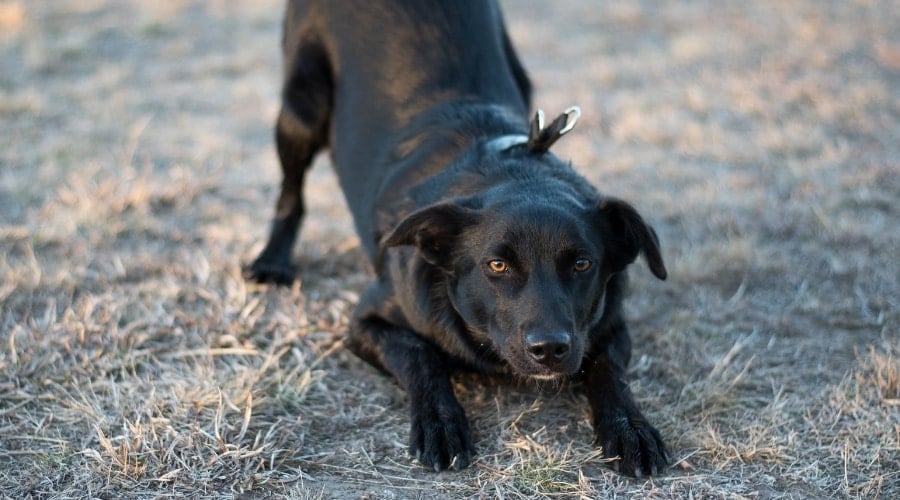
This mix thrives on routine, structure, and training. Without it? Expect digging, barking, or creative indoor redecorating. Dutch Labs are excellent for agility, scent work, or anyone who wants a dog that loves a job and learns fast.
Similar to the Belgian Lab, the Dutch Lab combines another Shepherd breed with the Labrador. Dutch Shepherds are commonly used as military and police dogs. They look similar in appearance to the Belgian Malinois and the German Shepherd, often being mistaken for both.
Dutch Shepherds are independent, and the Dutch Lab will inherit this trait. They learn quickly and do not need harsh training. These pups are good with families and other household pets, as long as they are socialized early.
This mix is also extremely active and will require a minimum of 60 minutes of exercise per day. Dutch Labs will come in anywhere from 45 to 65 pounds. Their coats can be a variety of colors, from black to brindle or a completely unique mix.
8. Irish Labrador (Irish Setter + Lab)
Red coat, sweet heart, and legs for days.
The Labrador Irish Setter mix is a gorgeous, leggy blend of two fun-loving sporting breeds. Irish Setters are known for their silky red coats and goofball energy, and mixing them with a Lab only amplifies the friendliness and fun.
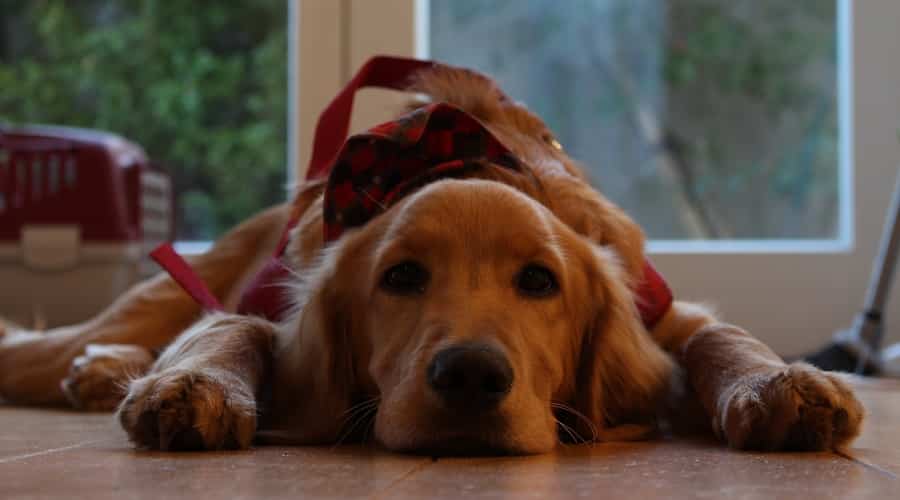
These dogs are typically social, high-energy, and happiest with plenty of space to run and play. They’re eager to please, easy to love, and may take the occasional zoomie break mid-conversation. Bonus: they tend to be stunners in the looks department.
The Labrador Retriever Irish Setter mix is a very rare find. The parents of this mixed breed are both sporting dogs that are certainly not couch potatoes. So, if you are lucky enough to come across this stunningly beautiful crossbreed, you’ll be taking on a very active, lively dog that needs plenty of exercise.
The Irish Labrador is a medium-sized dog with a double coat that does need grooming once or twice a week to keep it in nice condition. They are an intelligent and trainable breed that generally gets along well with everyone, provided you socialize and train your pup correctly from day one.
This breed does not do well when separated from their human family for long periods and can suffer from separation anxiety.
9. Lab Pei (Shar Pei + Lab)
Wrinkled, watchful, and a little weird, in the best way.
The Lab Pei is a one-of-a-kind blend of the Shar Pei’s unique look and serious nature with the Labrador’s friendliness. These dogs are often loyal to their inner circle and slightly wary of strangers. They tend to be moderate in energy, good in smaller homes, and not overly clingy.
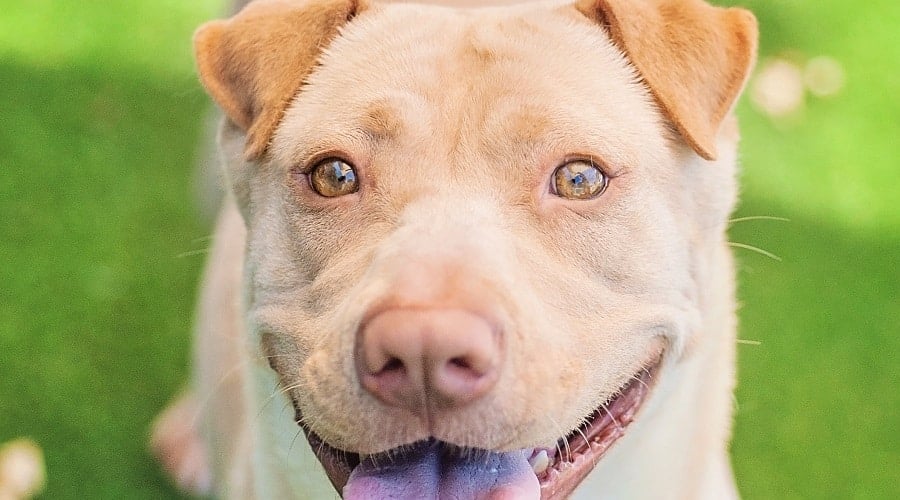
Their wrinkled features and slightly stubborn streak make them memorable, and with early training, they can become steady, loyal companions with a serious side-eye game.
The medium-sized Lab Pei usually inherits the sweet, crumpled-faded look of his Shar-Pei parent and makes a super family dog, as these pups love to be around children and other pets.
Although the breed is protective of its family and will bark to warn of strangers on their territory, these pups are generally not aggressive. Intelligent and keen to please, the Lab Pei is easy to train, thriving on human attention and wanting to be at the center of any family activity.
10. Laberner (Bernese Mountain Dog + Lab)
Big floof, bigger heart, moderate drool.
The Laberner is a sweet, shaggy mix that brings together two family-friendly giants: the Bernese Mountain Dog and the Labrador. These dogs are affectionate, mellow, and happiest when surrounded by people they love.
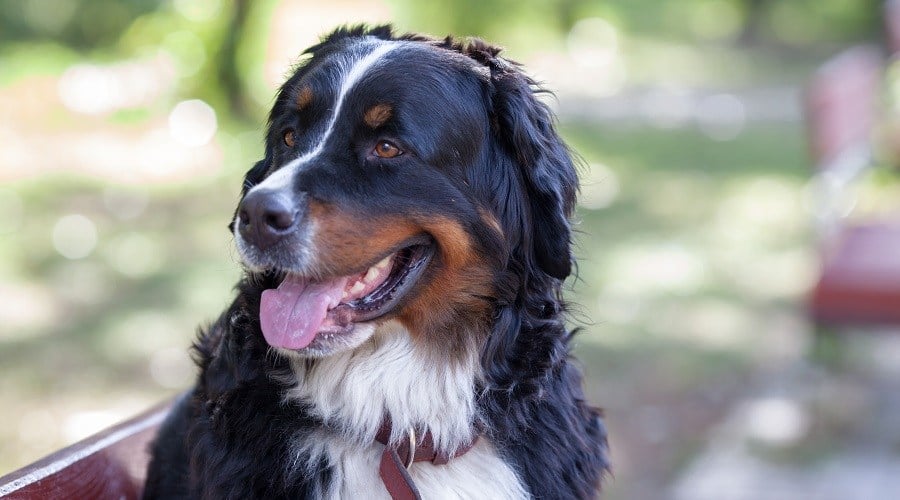
Expect a thick double coat, a serious shedding schedule, and a calm, watchful temperament. They’re not overly needy, but they love being involved in everything, mainly if it includes pets, treats, or snow. Ideal for families seeking a large, beautiful, low-maintenance dog.
The friendly Laberner is a Labrador that’s been mixed with a Bernese Mountain Dog. Although the Laberner usually has a calm temperament, these dogs can be aloof and suspicious around strangers thanks to the Bernese Mountain Dog parent’s guarding ancestry.
So, you’ll need to be sure to socialize your puppy from day one. Because of that, the Laberner is best suited to an experienced dog-owning home.
11. Labraboel (Boerboel + Lab)
Big presence, soft heart, firm handshake energy.
The Labraboel is a powerful, protective mix that combines the Boerboel’s guardian instincts with the Labrador’s friendly, trainable demeanor. These dogs are confident, muscular, and very aware of their surroundings.
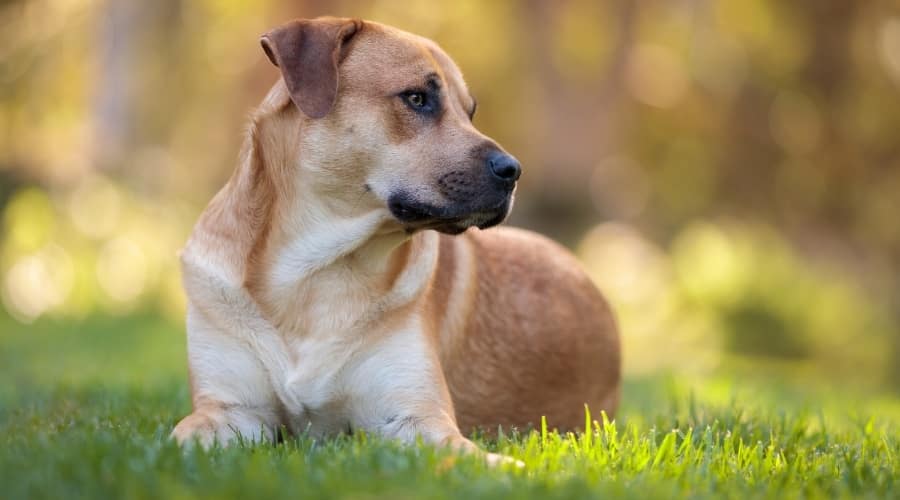
They’re natural watchdogs with a deep sense of loyalty, but much more approachable than a purebred Boerboel. With consistent training and socialization, they make excellent companions for experienced owners who appreciate a protective dog that still wants belly rubs after a hard day of patrolling the backyard.
Labraboels are a rarer mix as Boerboels are typically not crossed with many other breeds. They are somewhat rare in the United States, and they were originally a South African dog breed. They will weigh between 60 and 90 pounds, depending on gender.
Labraboels are somewhat unpredictable, like their South African Mastiff parent. They have guardian instincts and will be deliberately protective of their families. South African Mastiffs were bred to protect their land, and combined with the energy of the Labrador, these pups will need space to run.
12. Labrador Corso (Cane Corso + Lab)
Security system wrapped in a Labrador smile.
The Labrador Corso brings the serious, imposing energy of the Cane Corso into the playful world of Lab mixes. These dogs are large, alert, and highly devoted to their people. They’re not overly aggressive, but they do have strong guarding instincts and require confident, calm leadership.
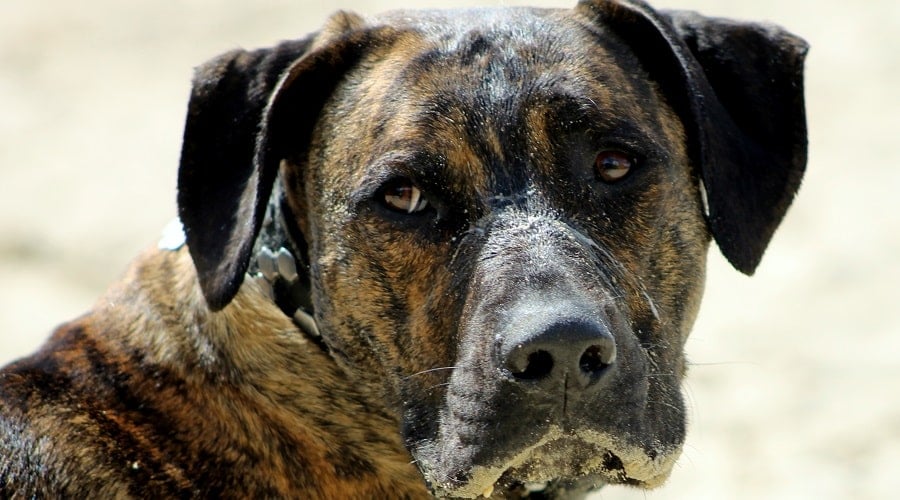
Early training is crucial, as these pups mature rapidly and require structure to thrive. Treated right, the Labrador Corso becomes a loyal, affectionate family protector with a gentle streak that only shows when it’s earned.
Cane Corsos are also known as Italian Mastiffs, and they are pretty large. These sizeable canines stand up to 28 inches tall at the shoulder and weigh between 55 and 100 pounds. So, you’ll need a large home with plenty of outside space to accommodate a Labrador Corso.
The Labrador Corso is a very smart, trainable dog. However, the Cane Corso’s parentage demands that their owner is kind, calm, yet firm, as the breed has a tendency to be dominant.
13. Labrahound (Labrador + Hound)
Gentle tracker with a heart as big as its nose.
The Labrahound is a friendly, calm mix blending the scent-driven curiosity of a Greyhound with the loving temperament of a Labrador. These dogs quietly follow interesting smells on walks, but they’re just as content cuddling indoors afterward.
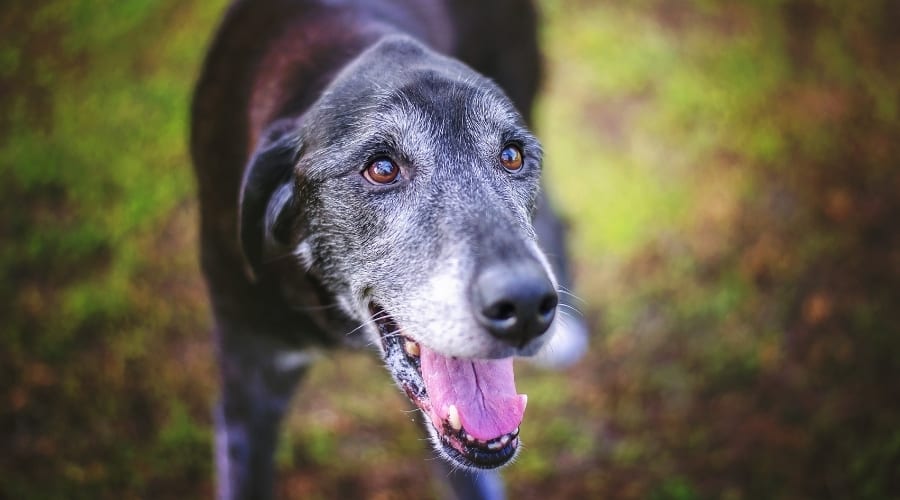
They’re moderate in energy, making them a solid match for families who enjoy strolls, sniff sessions, and nightly snuggles. Labrahounds are loyal without being overly demanding, and their keen sense of smell can be a fun feature or a comedic distraction when they decide the trash bag “needs investigating.”
These pups are going to be taller and leaner than a purebred Lab but slightly shorter in stature than an actual Greyhound. Labrahounds are excellent family dogs, as both Greyhounds and Labradors are very family-oriented dogs. They are great with kids and other dogs.
Depending on which parent your Labrahound takes after, they may not do well with other pets because of their coursing instincts. Labrahounds weigh between 50 and 75 pounds when fully grown.
Labrahounds can suffer from separation anxiety and are very sensitive. Harsh training is not recommended with this mix. Overall, the Labrahound makes an excellent family dog and can adapt to most living situations as long as they receive adequate exercise each day.
14. Labrastaffie (Staffordshire Bull Terrier + Lab)
Compact, loyal, and built like a muscle-packed marshmallow.
The Labrastaffie blends the confidence and strength of the Staffordshire Bull Terrier with the outgoing, eager-to-please vibe of the Lab. These dogs are typically medium-sized, affectionate, and full of personality.
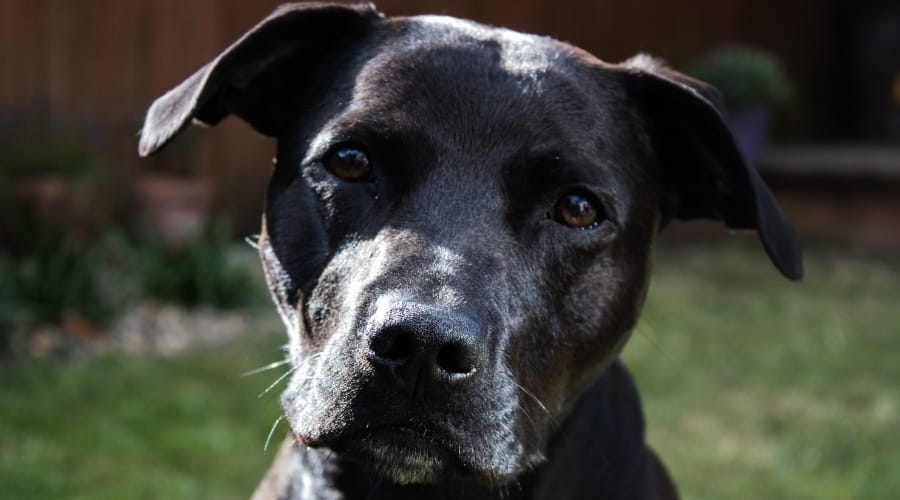
They’re often great with kids and fiercely loyal, although they can be headstrong and require firm yet positive training. Labrastaffies tend to be alert and protective without being overbearing, a great fit for owners who want a solid, loving dog with a bit of attitude and a whole lot of cuddle energy.
These extremely active pups are often confused for a Labrabull. They can look like just another Black Lab mix, or they can carry several different coat colors, including brown or brindle. This mix will grow to about 40 to 60 pounds in weight, regardless of the gender of your pup.
Because their Staffordshire Terrier parent is a working breed, Labrastaffies have a lot of energy and are always ready to play. If you can’t dedicate at least 60 minutes a day towards their extensive exercise needs, Labrastaffies will find ways to keep themselves busy (which you don’t want).
15. Pitador (Pit Bull + Lab)
All heart, big smile, unshakable loyalty.
The Pitador is a strong, affectionate mix that combines the powerful build of a Pit Bull with the sunny, social nature of a Lab. These dogs are devoted, energetic, and love being close to their people. They’re often great with kids and eager to be part of every family activity, from hikes to movie nights.
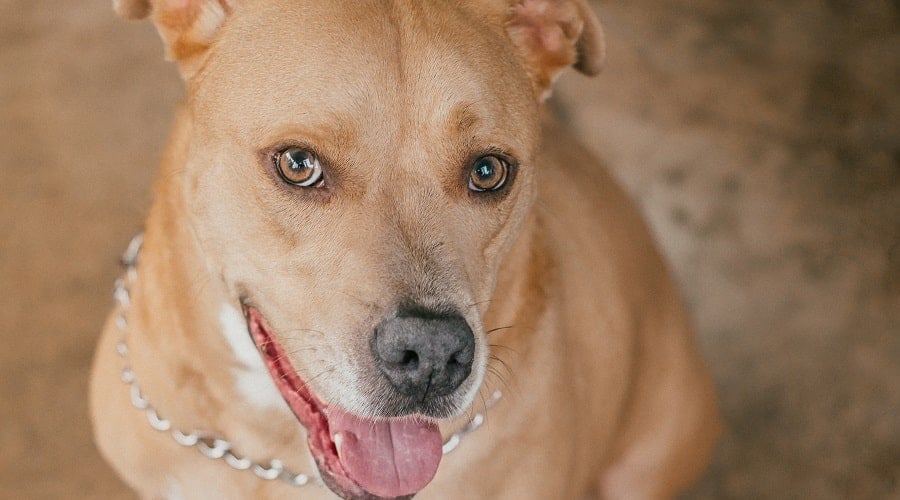
With training and early socialization, Pitadors are sweet-natured and obedient, though they may still try to bulldoze you out of excitement. Give them love, structure, and space to play, and you’ll have a best friend for life.
These are large, muscular Pitbull mixes that can weigh between 30 and 80 pounds, with a lifespan of up to 16 years. The Pitador’s grooming requirements are modest, as the coat is short. However, these dogs shed moderately throughout the year.
Pitadors are known to be loyal, friendly, and intelligent. They make good family pets, provided they are properly trained and well-socialized from a young age. Training a Pitador is usually pretty straightforward, as this hybrid is extremely smart and eager to please.
16. Plottador (Plott Hound + Lab)
Serious sniffer with soulful eyes and endless loyalty.
The Plottador blends the hunting drive and deep bark of a Plott Hound with the friendly, trainable nature of a Lab. These dogs are alert, loyal, and often more reserved than typical Lab mixes. Their scenting instincts make them great for tracking or just sniffing every inch of your backyard like it’s a mystery novel.
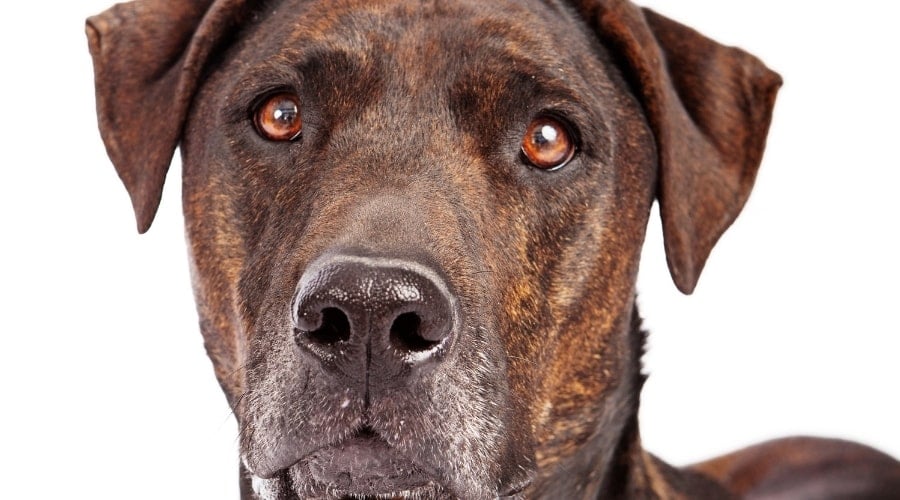
They can be vocal and stubborn, but with a patient owner and daily exercise, Plottadors are calm, loving companions who just want a job to do and a spot on the couch afterward.
Both parents are hunting breeds, so Plottadors are excellent hunting companions if that’s your goal when adopting a new pup. Plottadors are medium-sized pups and are active.
They grow anywhere between 50 and 65 pounds when fully grown. Plottadors are leaner dogs and should stay leaner, provided their activity levels continue. You’ll need to exercise your Plottador around 60 minutes a day, and they will do best with a little space to roam around in.
17. Schnauzador (Schnauzer + Lab)
Bearded chaos in a Labrador body.
The Schnauzador is a quirky, spirited mix that blends the Schnauzer’s bold, independent streak with the Lab’s easygoing friendliness. These dogs are clever, curious, and often hilarious, with strong opinions and a big bark for their size.
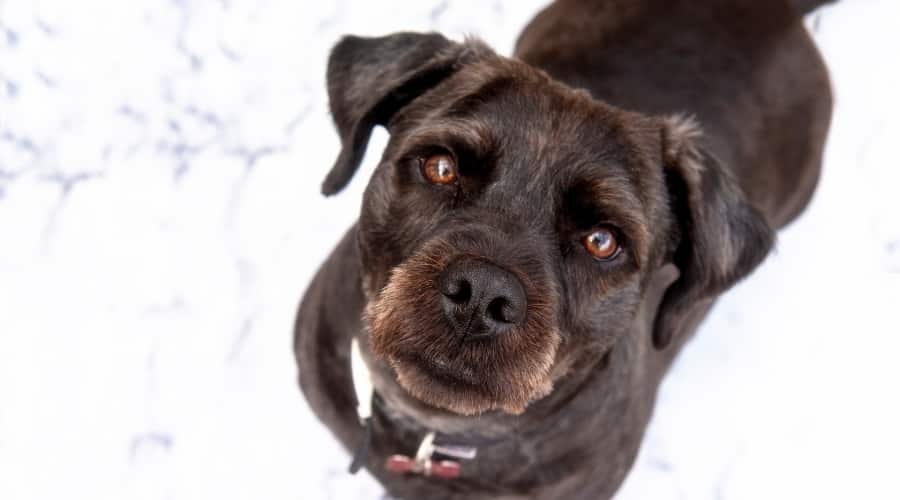
Schnauzadors thrive in homes where they get both attention and structure, and where their comedic timing can shine. If you want a dog with attitude, loyalty, and just enough weirdness to keep life spicy, the Schnauzador delivers.
The Schnazuador sheds less than a purebred Lab and has a shorter, wirier coat. They are easier to groom than their Lab parent, and their coats also require less maintenance.
Schnauzadors are large dogs. They weigh between 60 and 80 pounds when fully grown. They are loyal family dogs that will do well with most families. If properly socialized from a young age, they will also get along quite well with other household pets.
How To Pick The Right Lab Mix For You
You’ve seen the 51 flavors of Labrador chaos, now, how do you choose the one that actually fits your life?
Start by thinking about energy. If you run 5Ks for fun or own hiking boots and use them, look into high-energy mixes like the Borador, Labraheeler, or Vizslador. If your idea of activity is moving from the couch to the fridge, a Mastador, Bassador, or Newfiedor might be more your speed.
Next, check your space and size tolerance. Live in an apartment or prefer a smaller companion? Go for a mini mix like the Cavador or Pugador. Got a big yard and even bigger love to give? A gentle giant like the Labradane or Pyrador might be perfect.
Also consider grooming needs. Some mixes shed like a snowstorm (Chabrador, Labbernard), while others are lower-maintenance but still need regular brushing. Allergy-prone? The Labradoodle or Schnauzador may be more forgiving.
And finally, vibe check. Want a dog that sticks to you like Velcro? Try a Goldador, Vizslador, or Springador. Prefer a more independent chill? Check out the Anatolian Lab, Lab Pei, or Labrahound.
Bottom line: There’s no “best” Lab mix. Just the best one for you. Scroll back, pick your top three, and start imagining who’s about to steal your snacks and your heart.
Thinking Adoption? Here’s Why You Should
Before you head straight to a breeder, consider this: Labrador Retriever mixes are everywhere, and a lot of them are already sitting in shelters, rescues, or foster homes waiting for a second chance. You could skip the puppy chaos and still find your perfect match.
Start by checking with local shelters, Labrador-specific rescue groups, and humane societies. Don’t forget to ask your vet, as they often know reputable rescues in your area. And always make sure the dog has been health-checked and temperament-tested before bringing them home.
Not sure if you’re ready to commit? Try fostering. It’s like a test drive for dog ownership. You give a pup a safe, loving space while figuring out if they’re the right fit for your home, schedule, and lifestyle. If it clicks? Instant adoption story. If not? You still helped a dog in need.
Fostering is especially great if you’re not up for puppy surprises. With an adult dog, what you see is what you get, personality, size, and energy level included.
Labrador Retriever Mixes
And one final note: Labrador mixes aren’t always predictable. Mixed genetics mean you might end up with a 40-pound cuddle bug or a 90-pound goofball.
A doggy DNA test can help if you’re curious, but either way, studies show that most Lab mixes tend to be healthier and longer-lived than many purebreds. Plus, you’re giving a good dog a great home. That’s a win-win in any book.
Here’s How To Set Your Lab Mix Up For Success
Once you’ve picked your perfect Labrador mix, it’s time to gear up like a pro. Start with a supportive, orthopedic dog bed. Lab bodies (and their mixes) are prone to hip and joint issues, so investing in comfort now can save on vet bills later.
For playtime, stock up on durable chew toys and puzzle feeders that challenge their brains and stand up to serious chompers, especially if your mix includes breeds known for their intensity or tendency to chew out of boredom.
For walks, skip the collar tug-of-war and opt for a padded, no-pull harness that provides better control and reduces strain on your dog’s neck and shoulders.
And finally, don’t skimp on coverage. Choose a pet insurance plan that covers hereditary conditions common to Labs (like joint dysplasia, allergies, or eye issues), and double-check it fits the traits of your Lab’s other half, too. A little prep now makes all the difference in giving your new best friend a healthy, happy, zoomie-filled life.
Got a Lab Mix? We Want To Hear About Them! Have a Labradoodle that thinks it’s royalty? A Labrahuahua with main-character energy? Share your story and tips in the comments below, or tag us on social with your favorite Lab mix moments!
